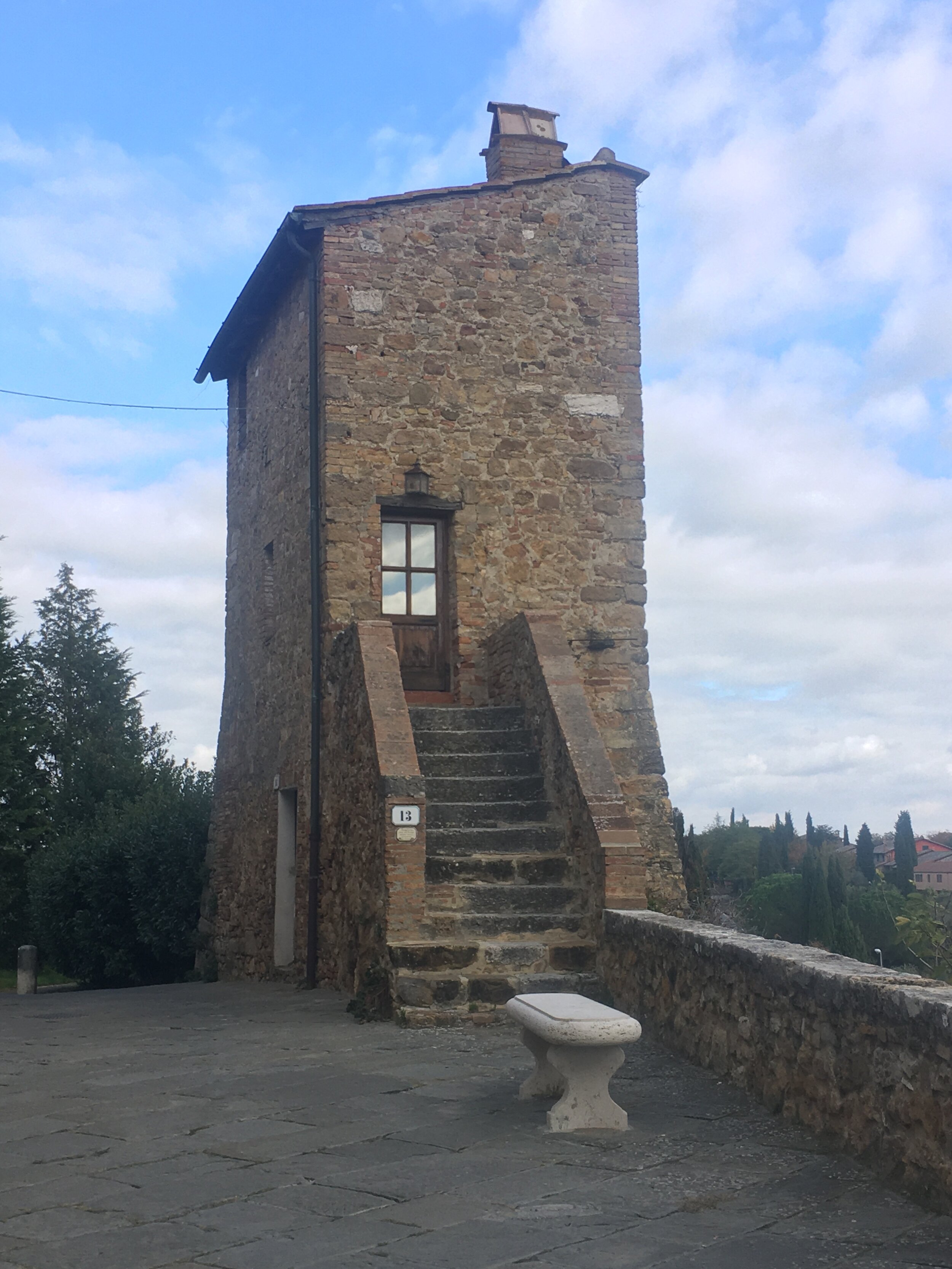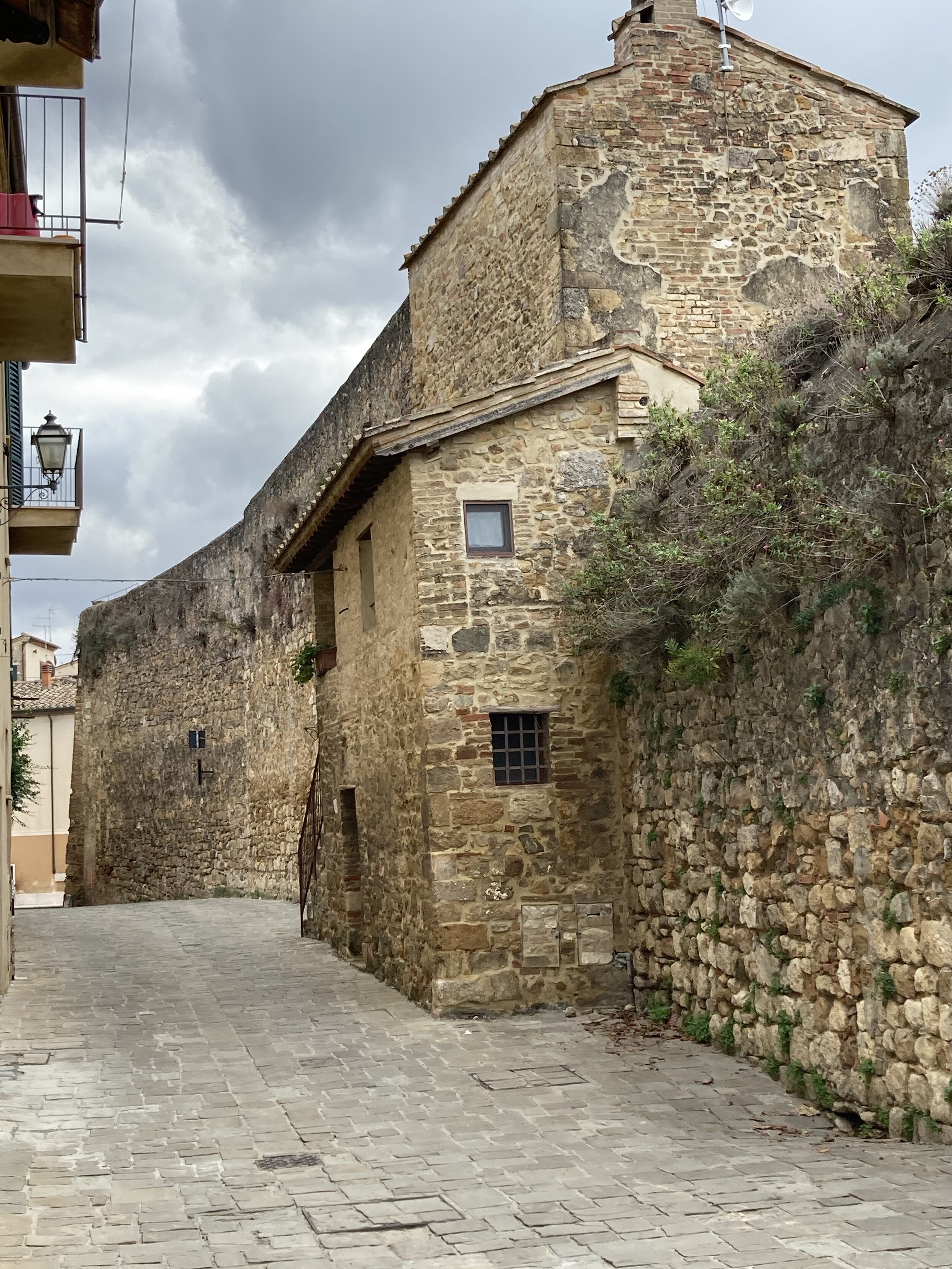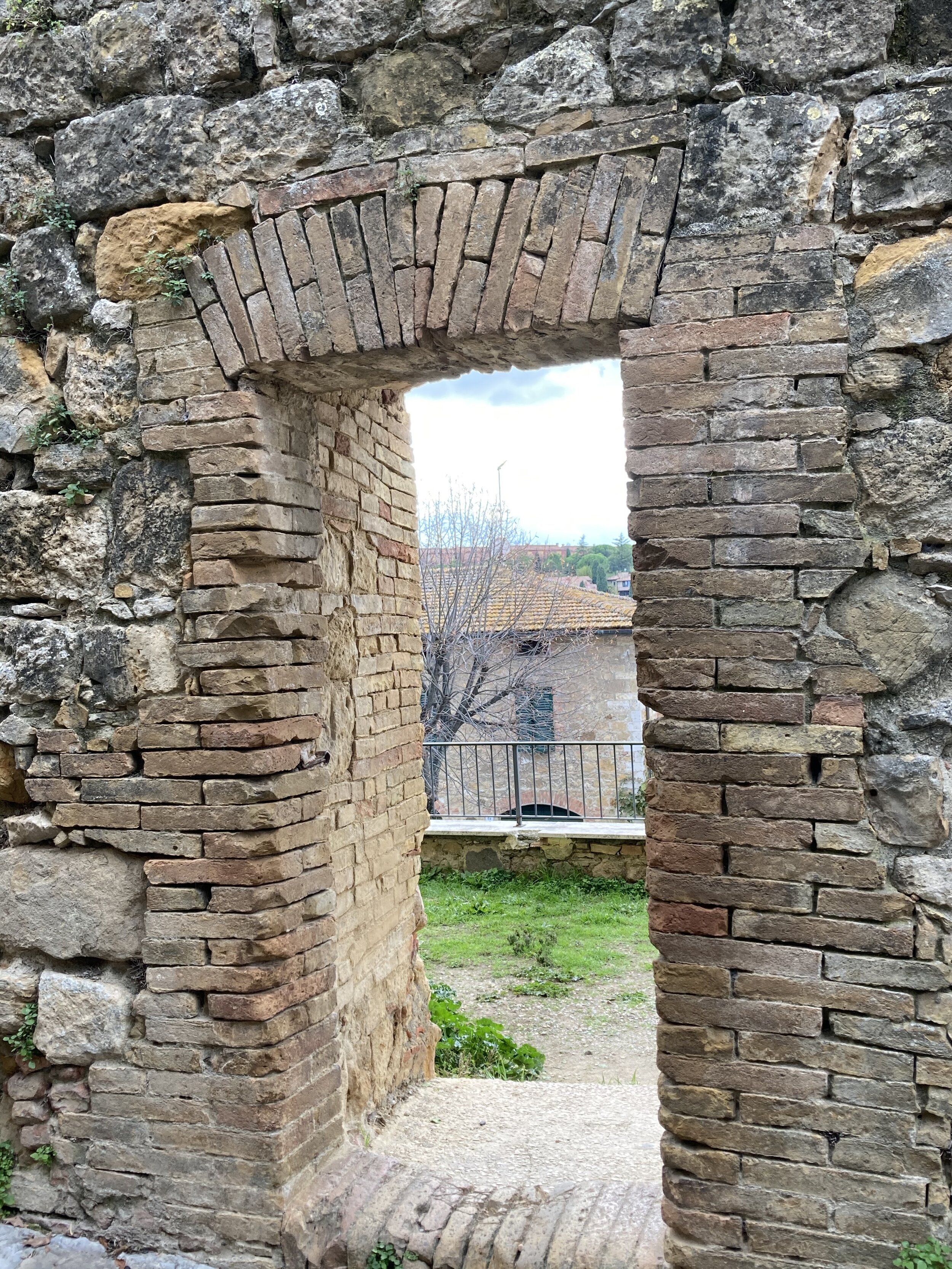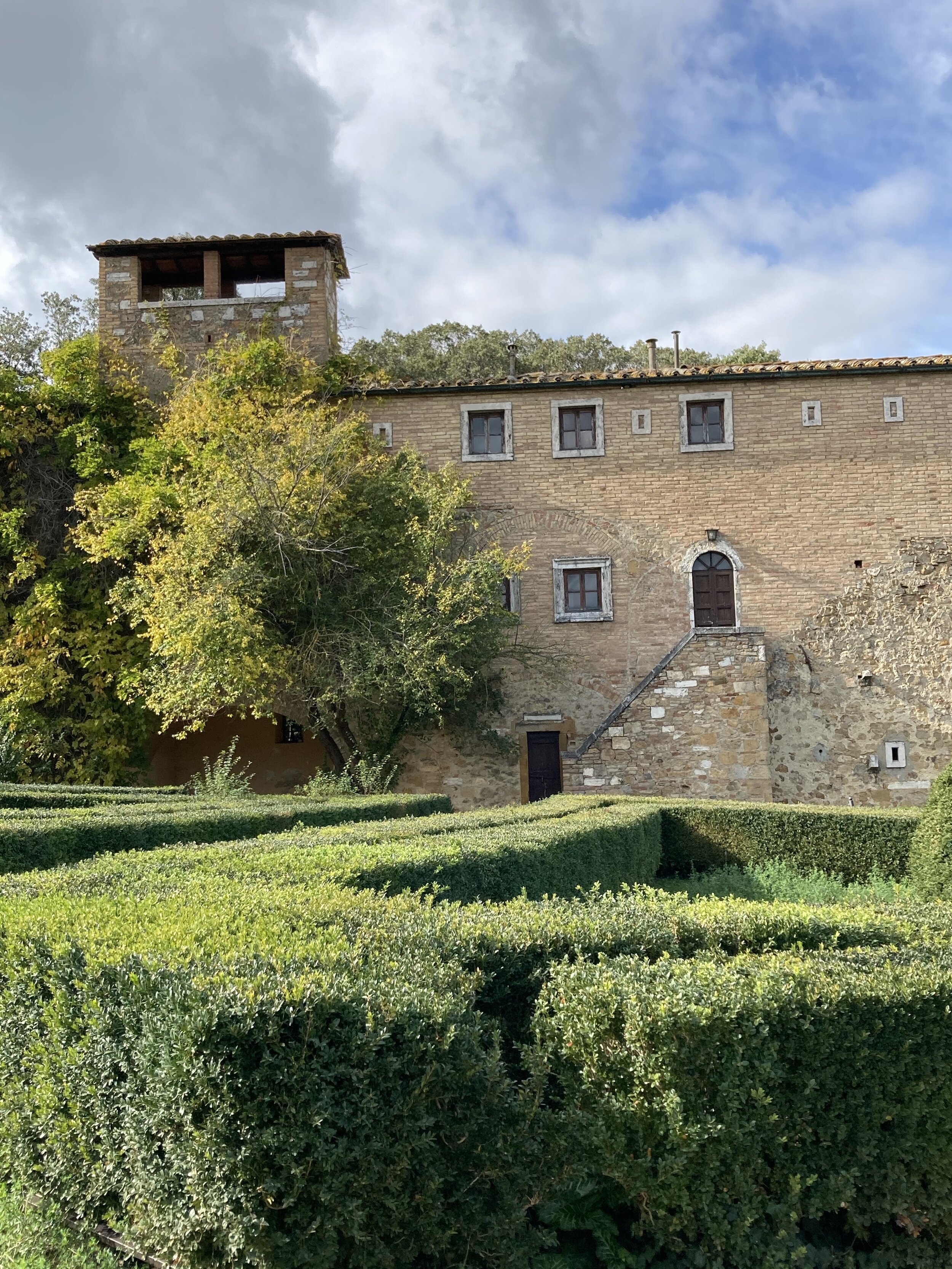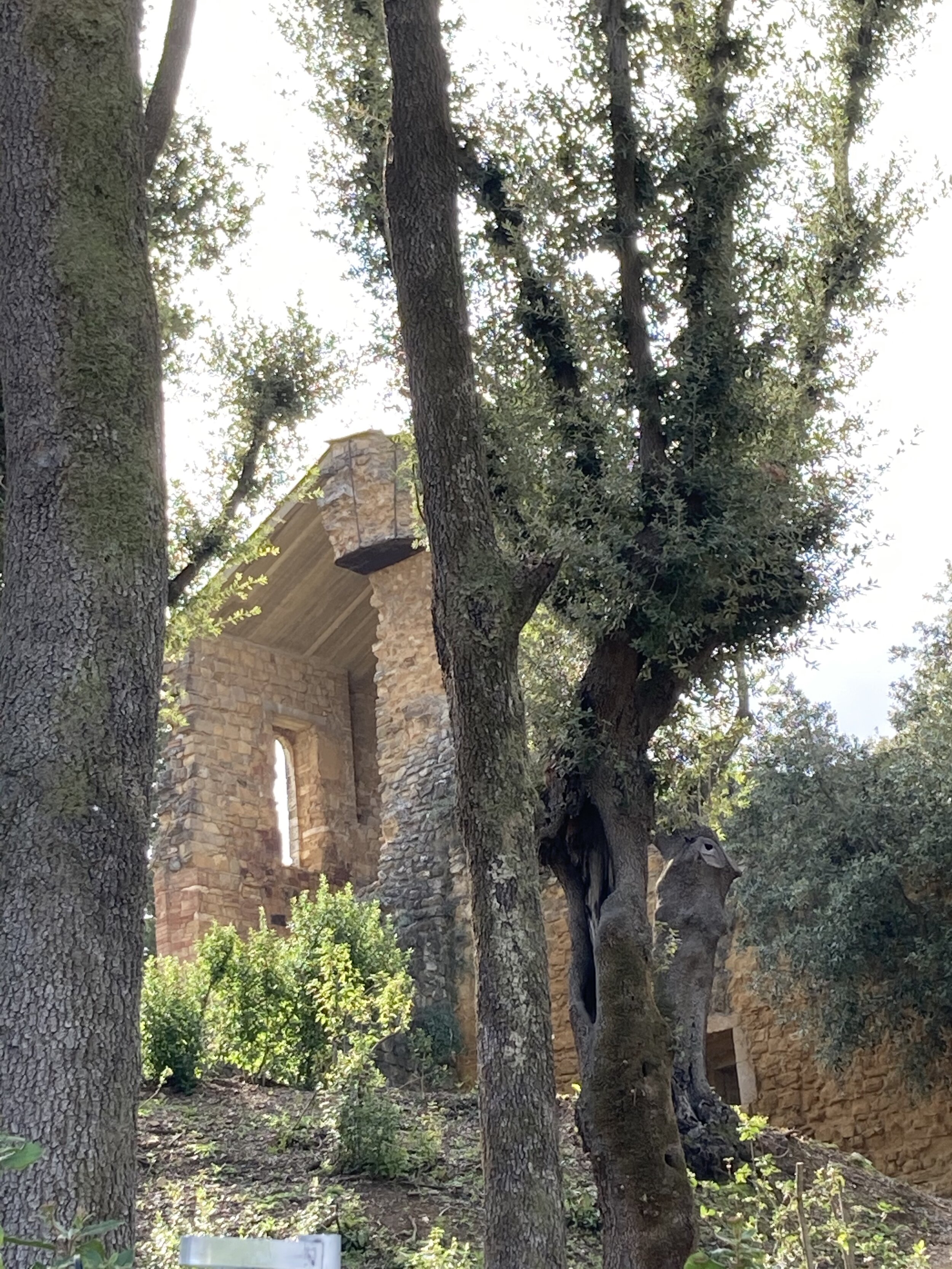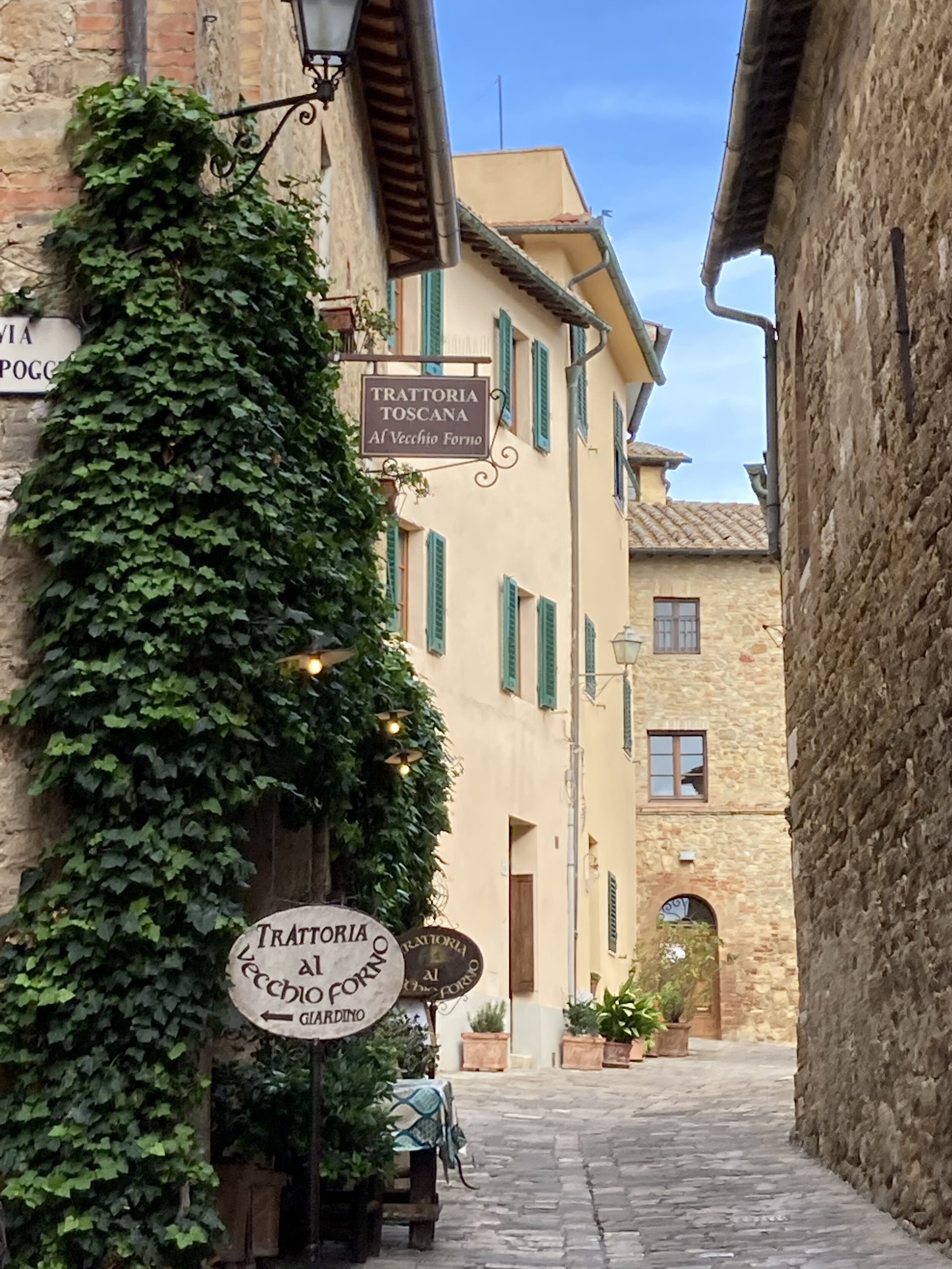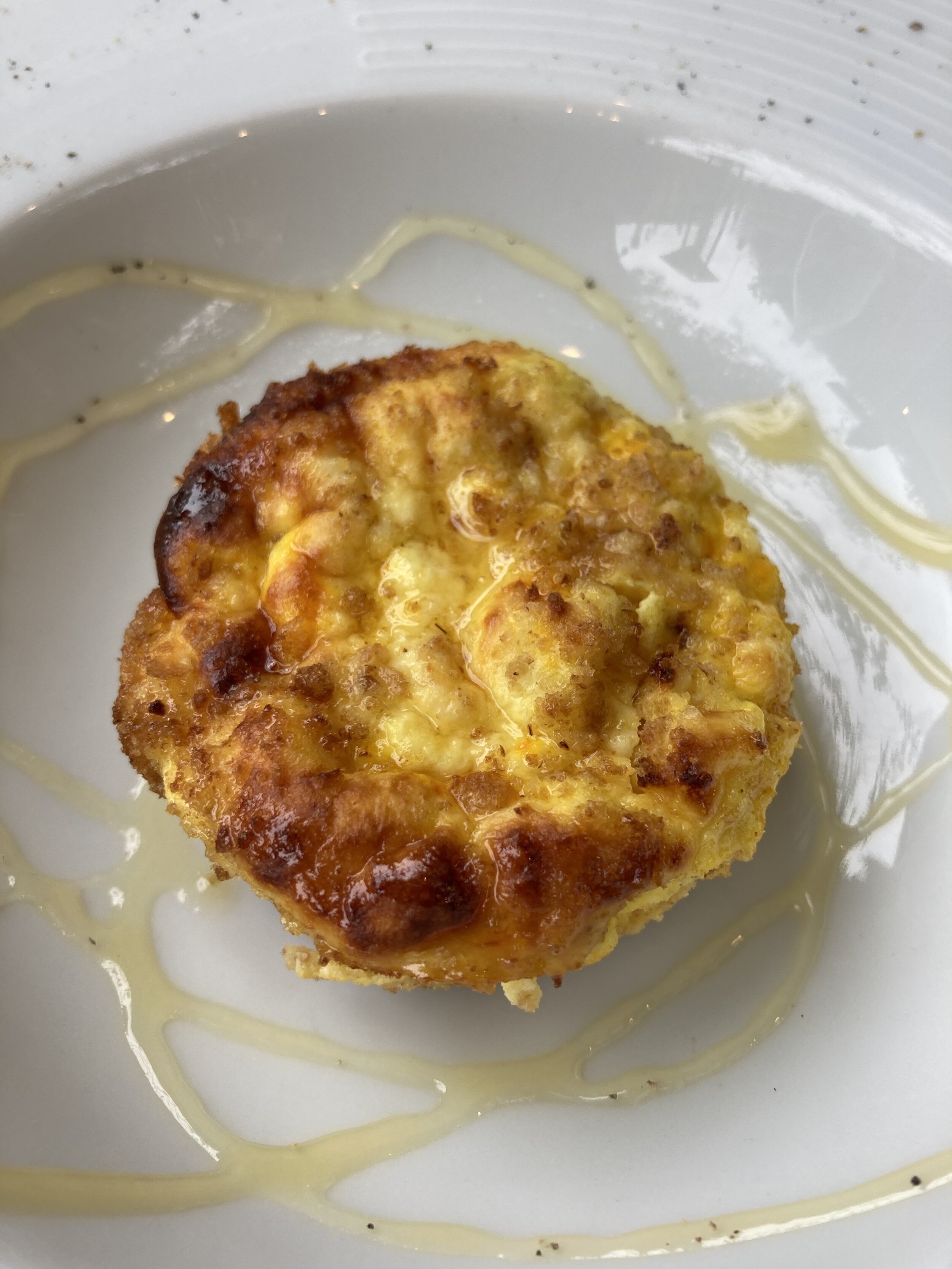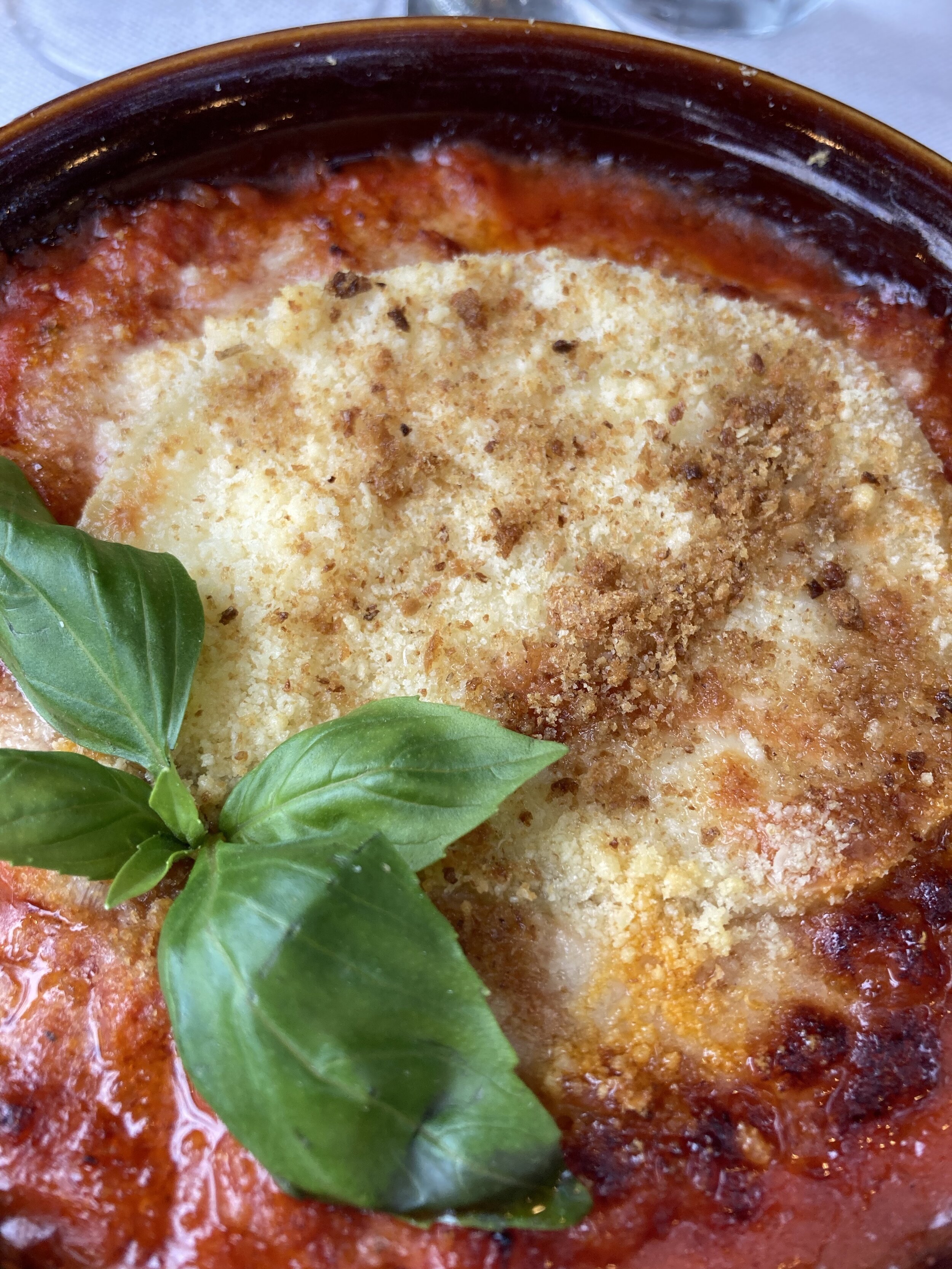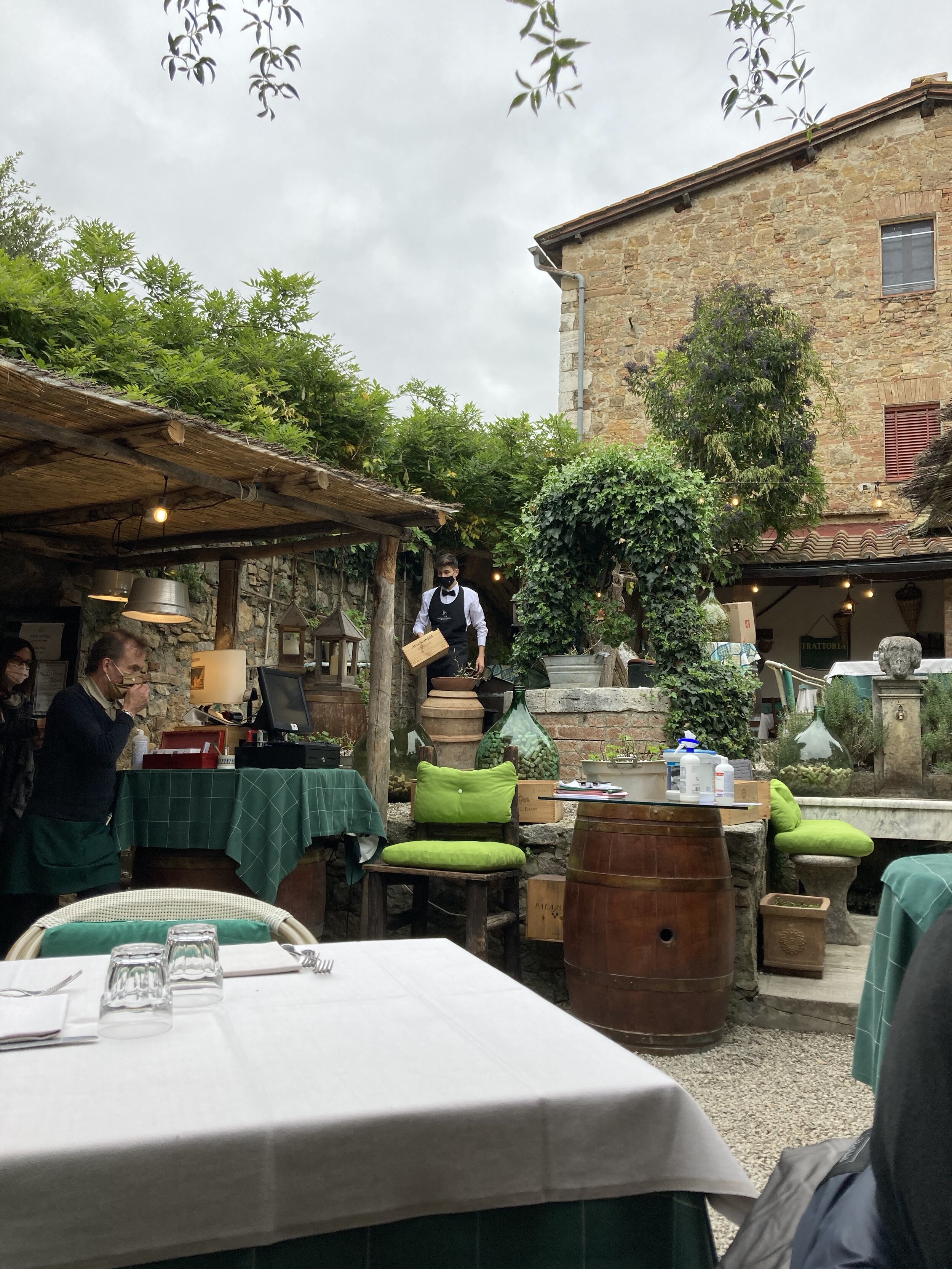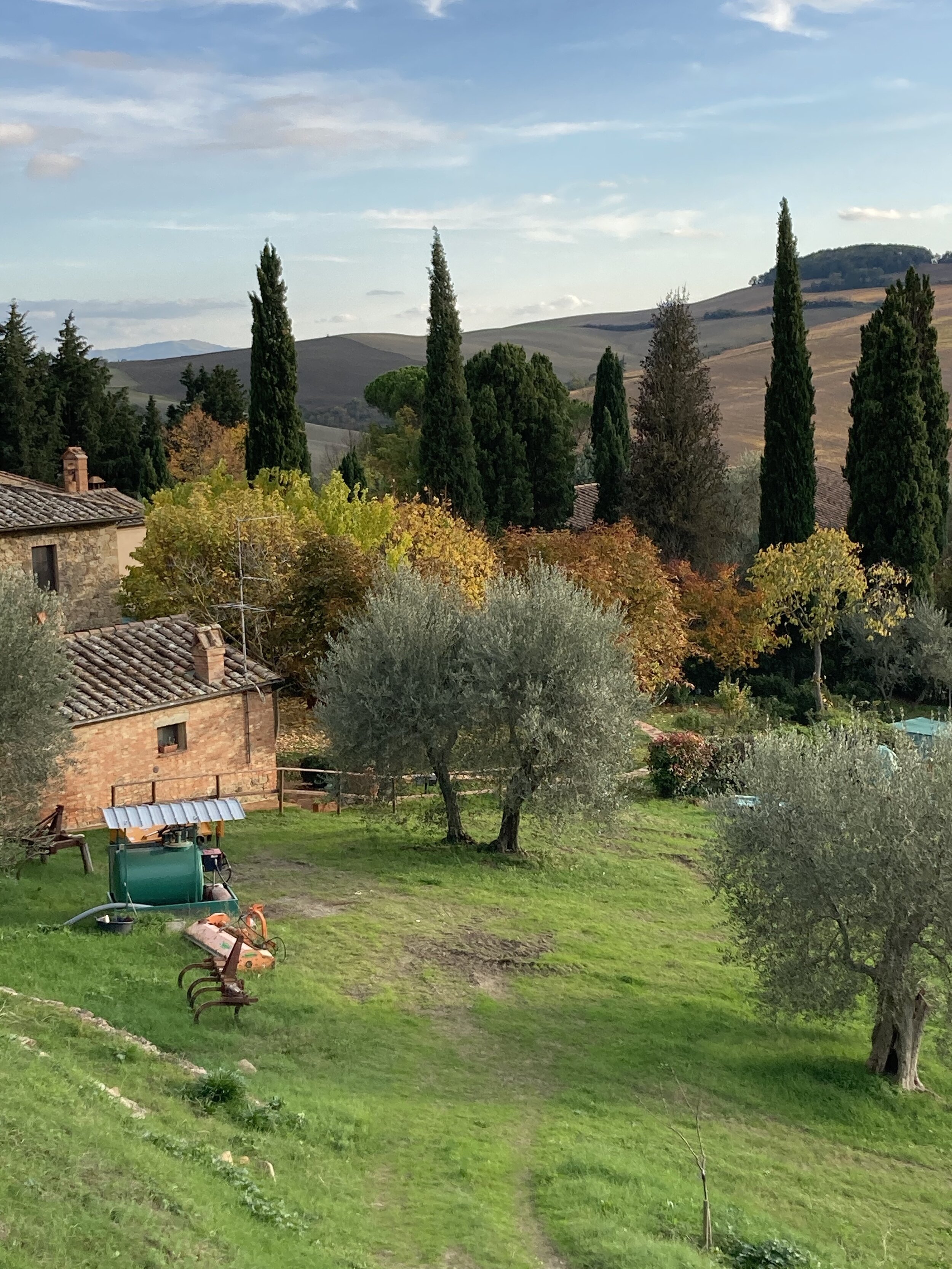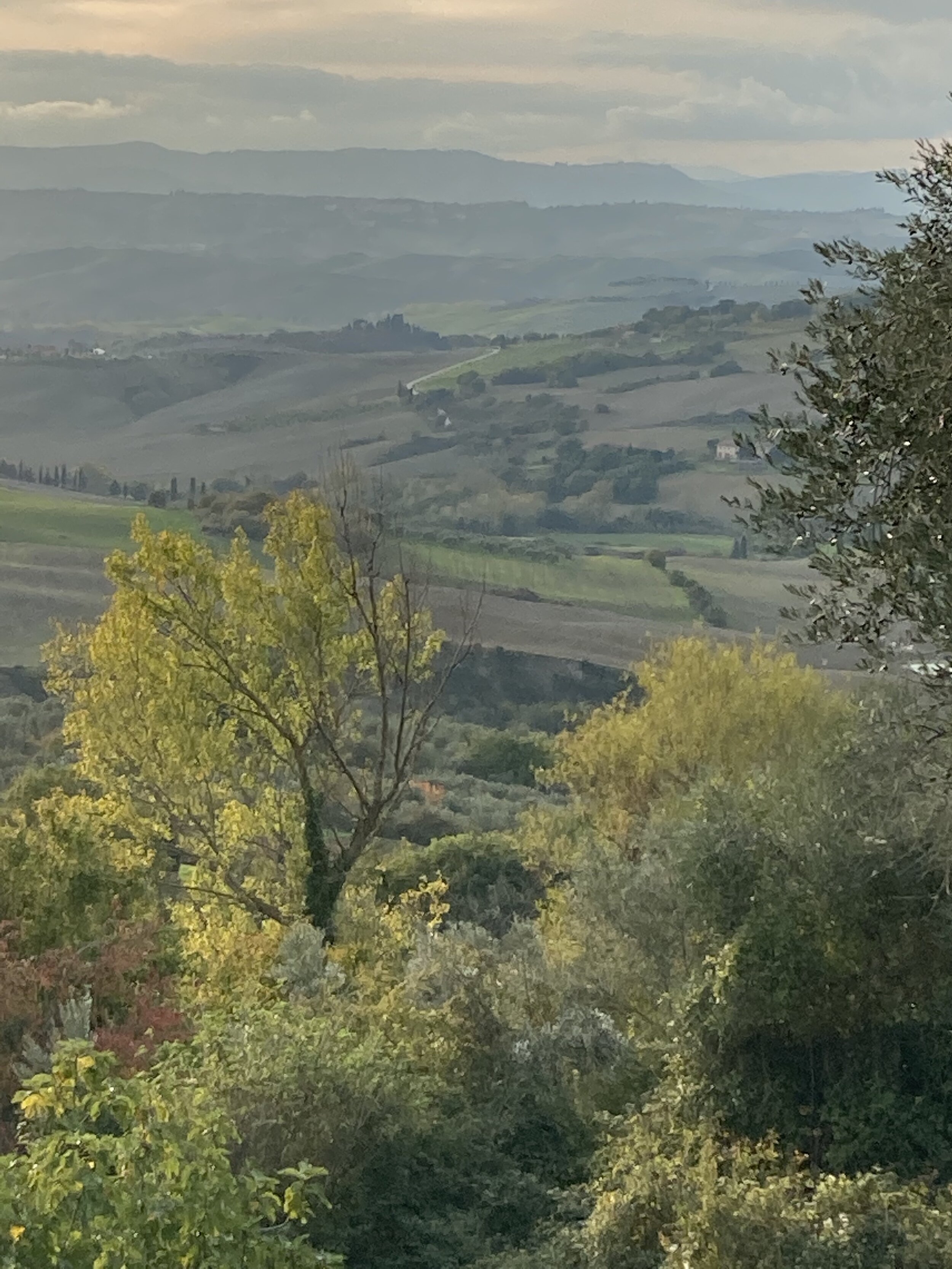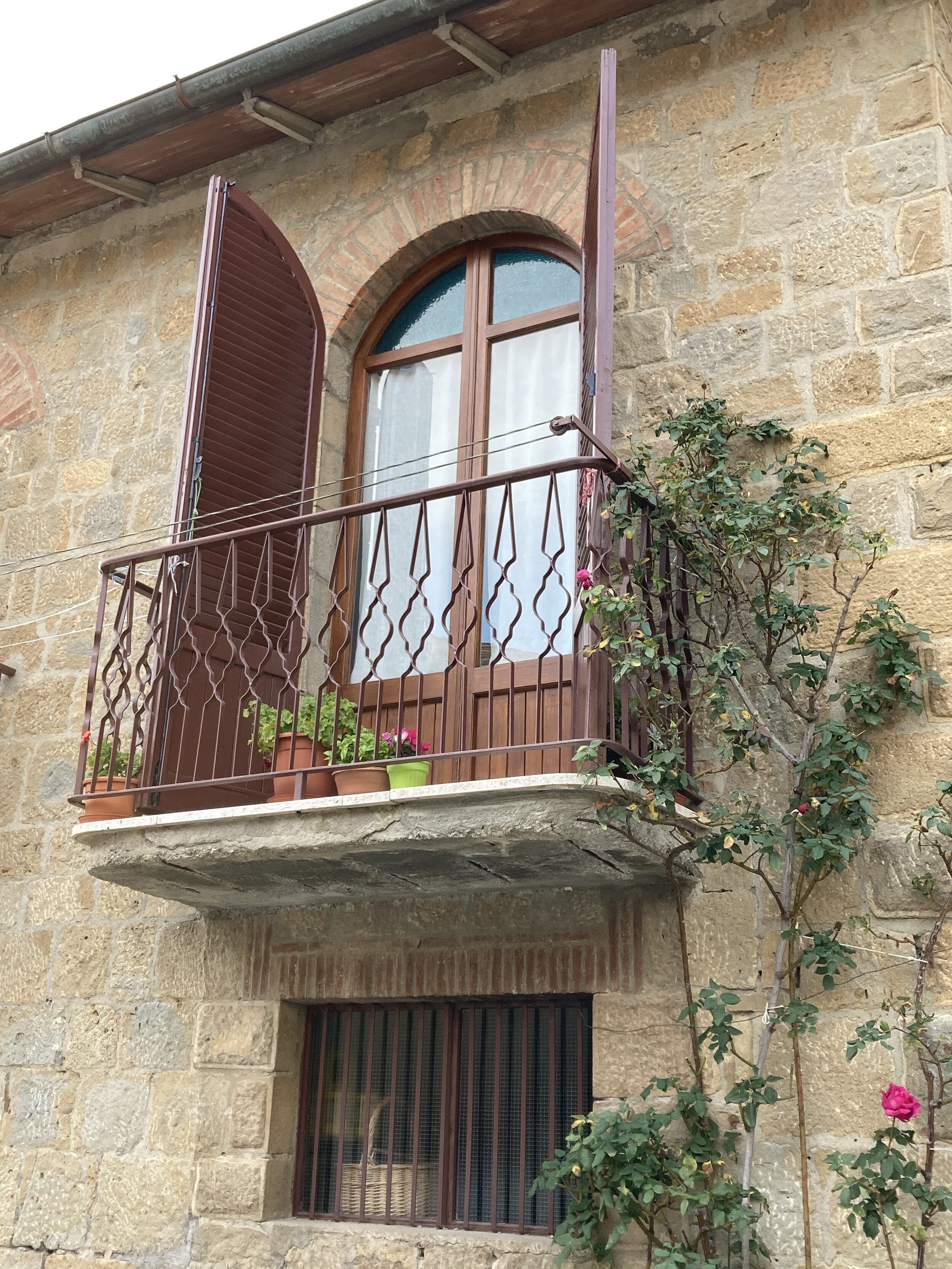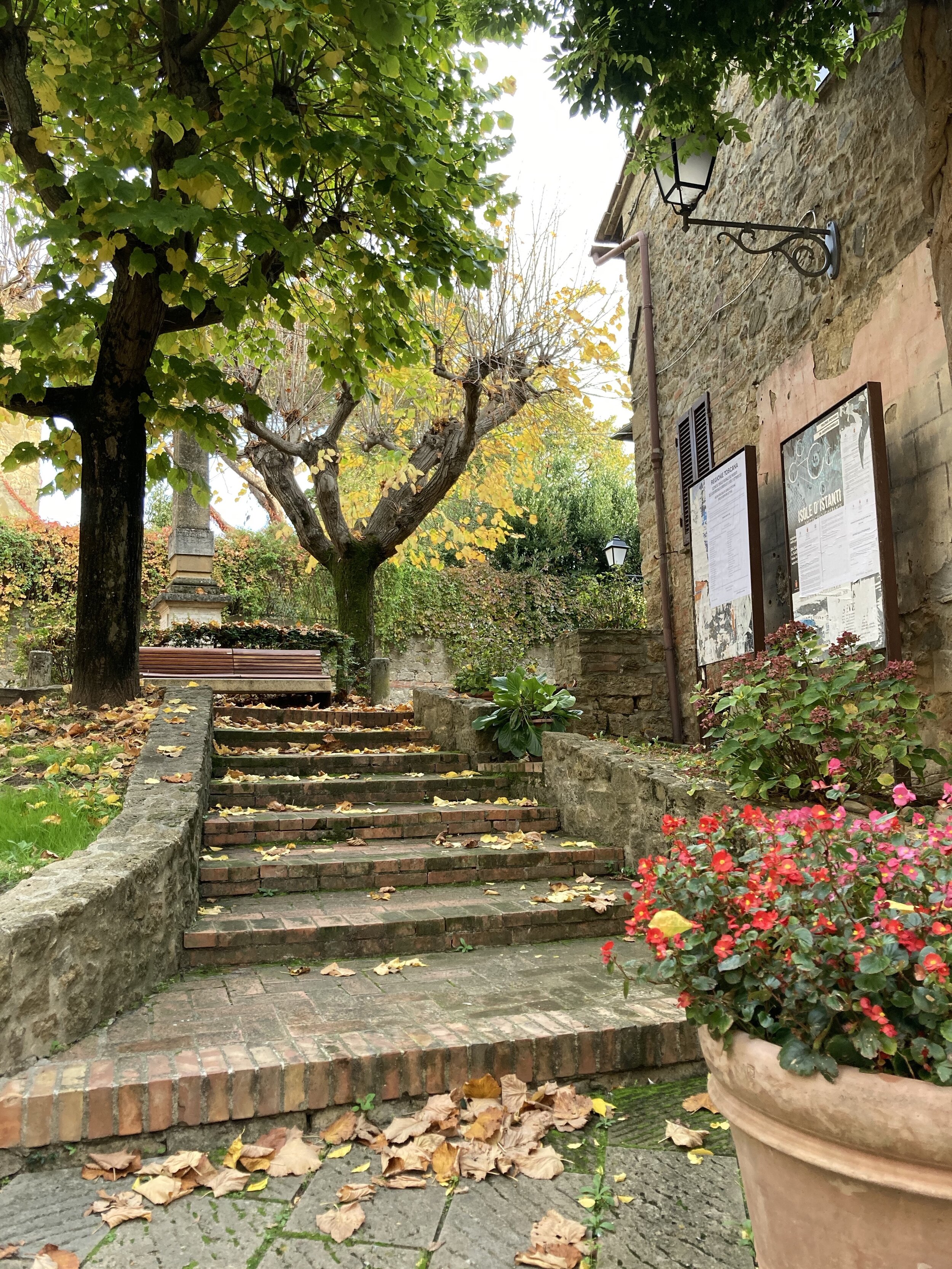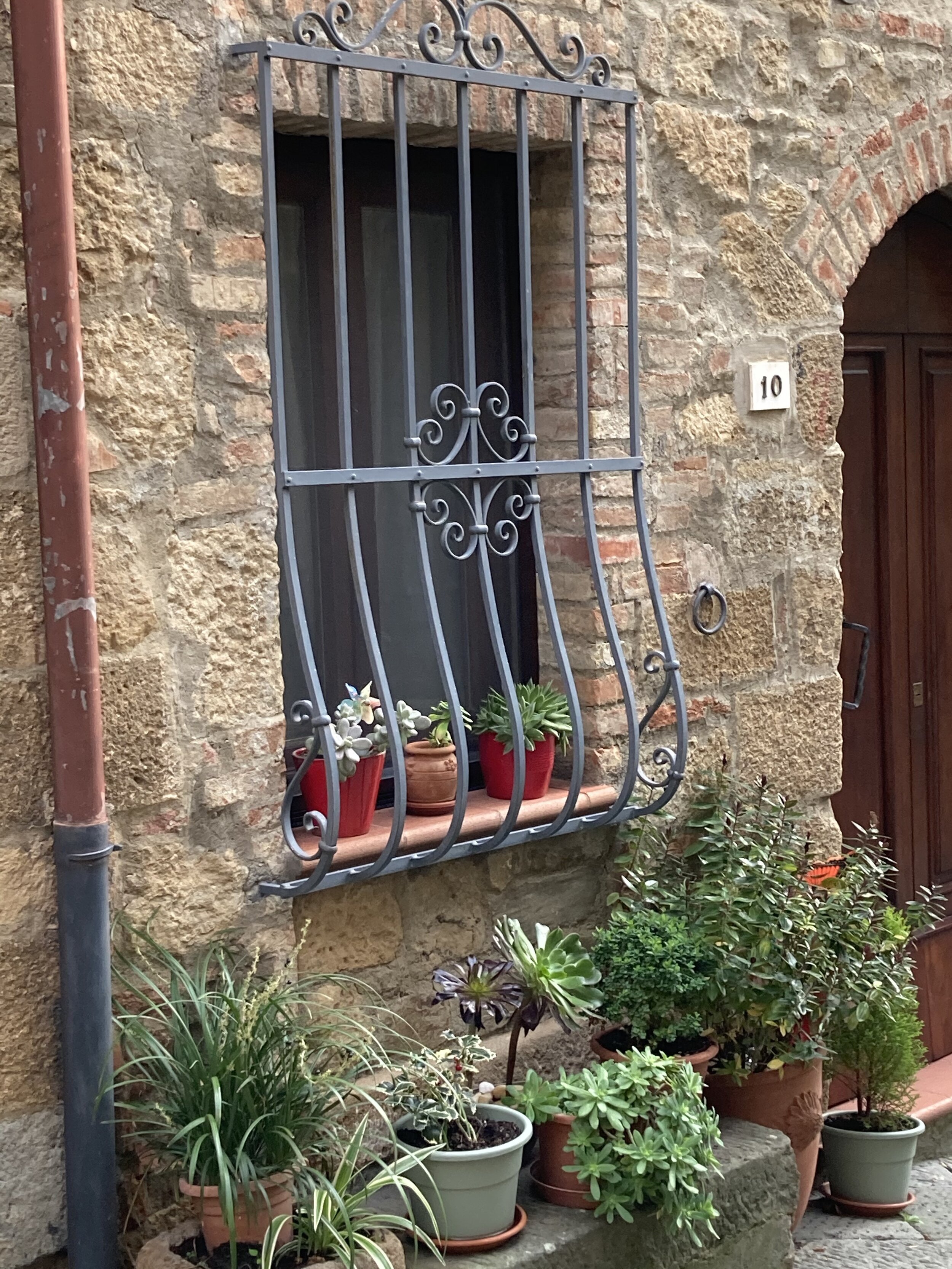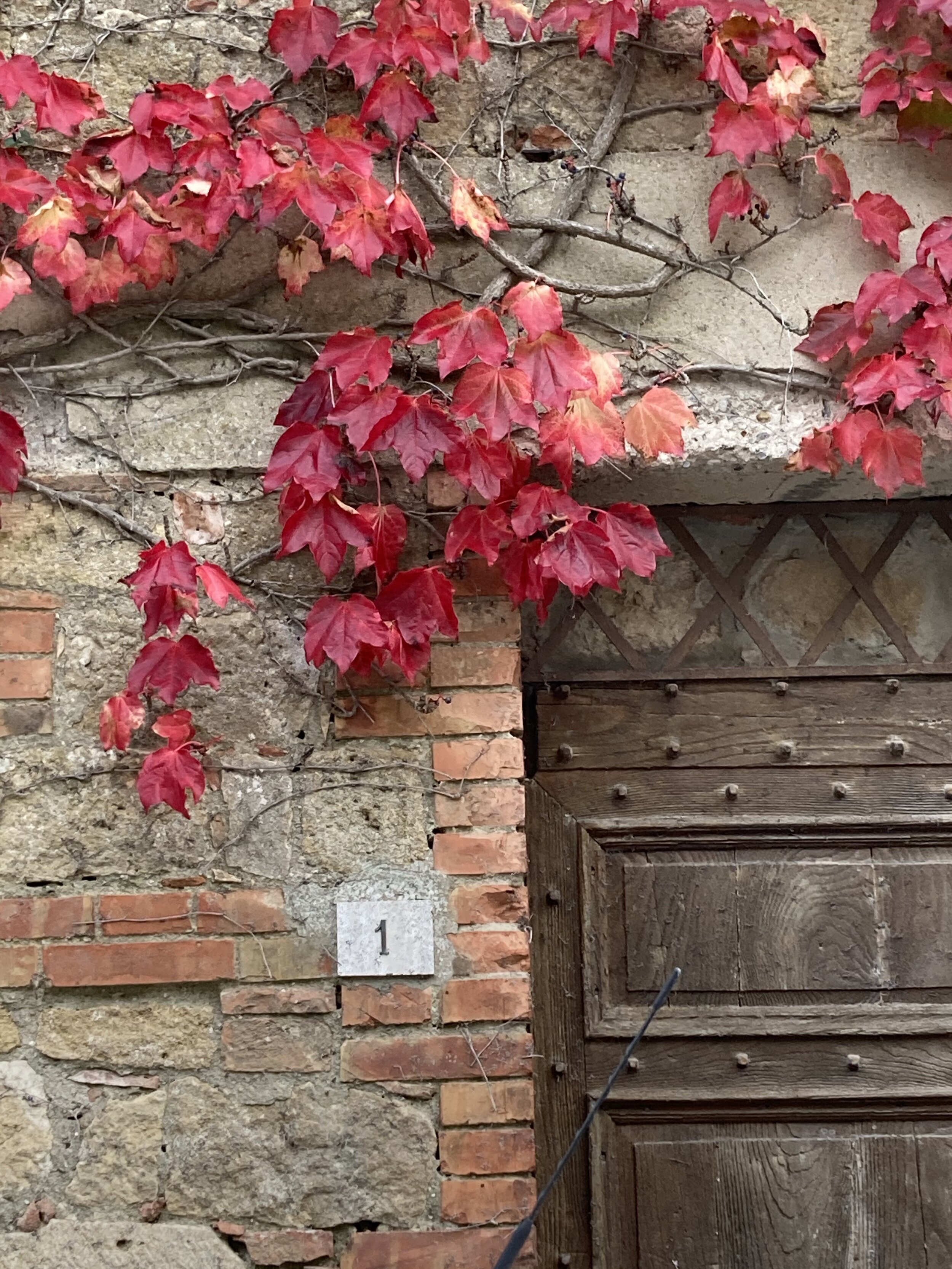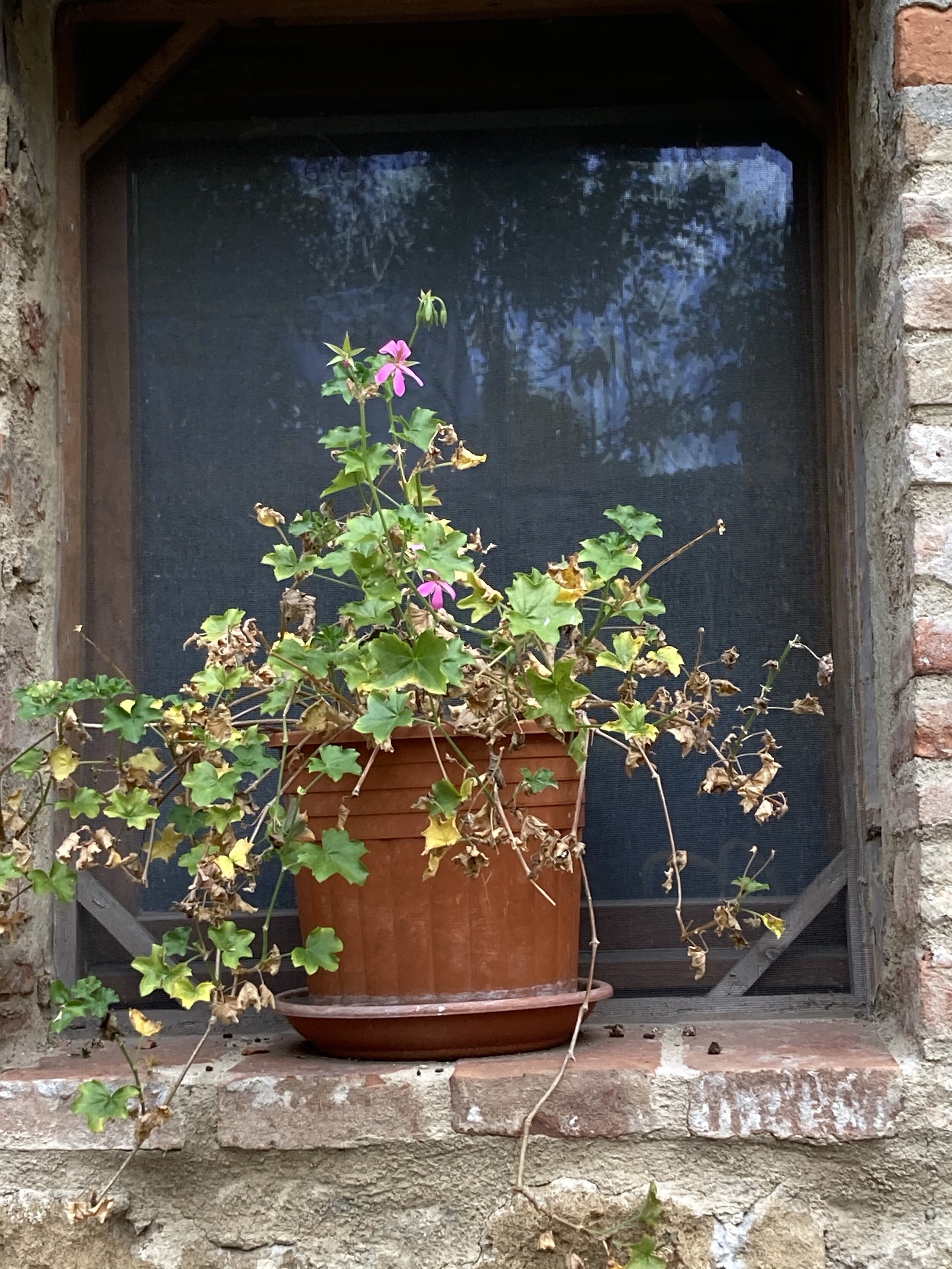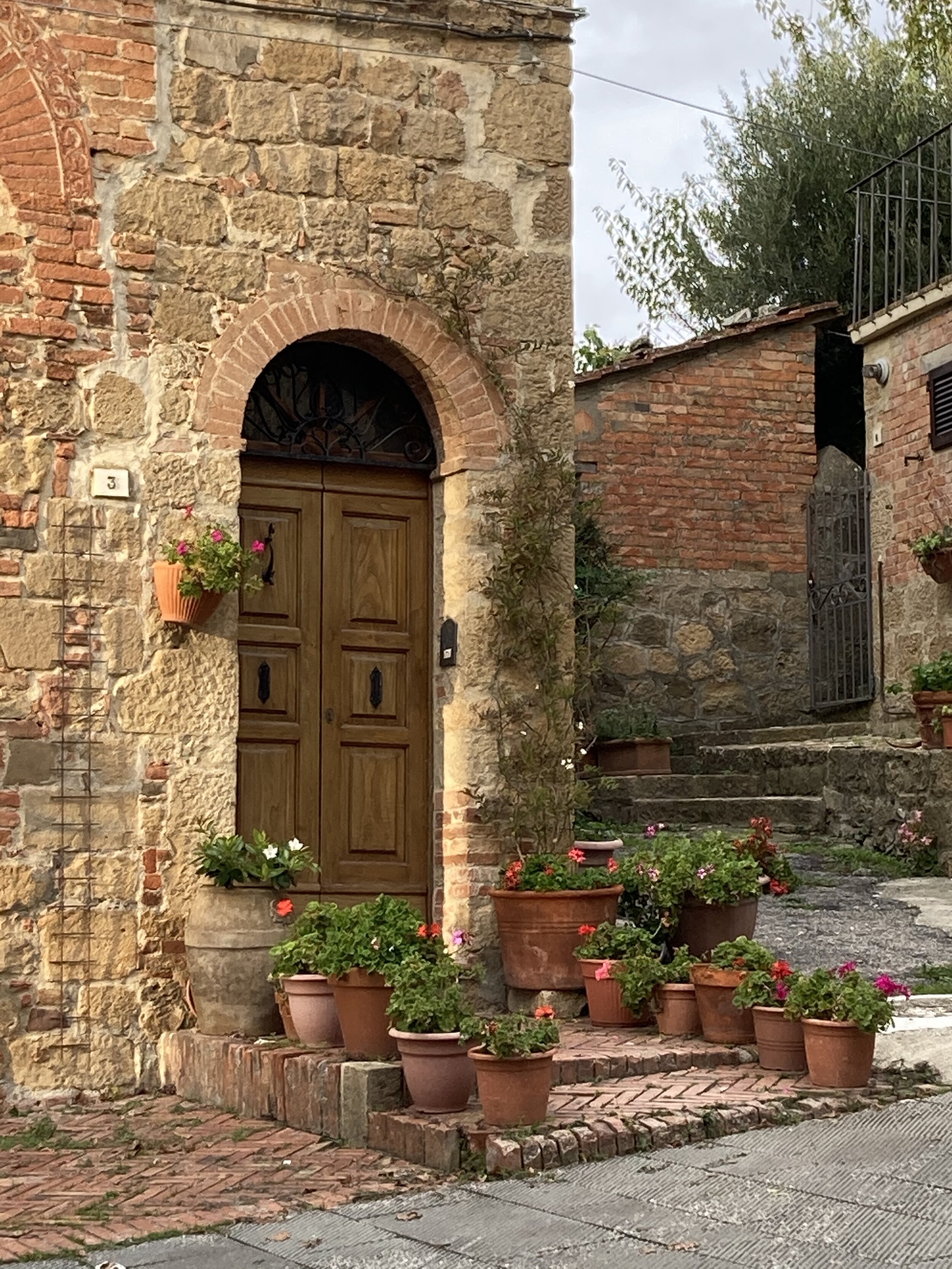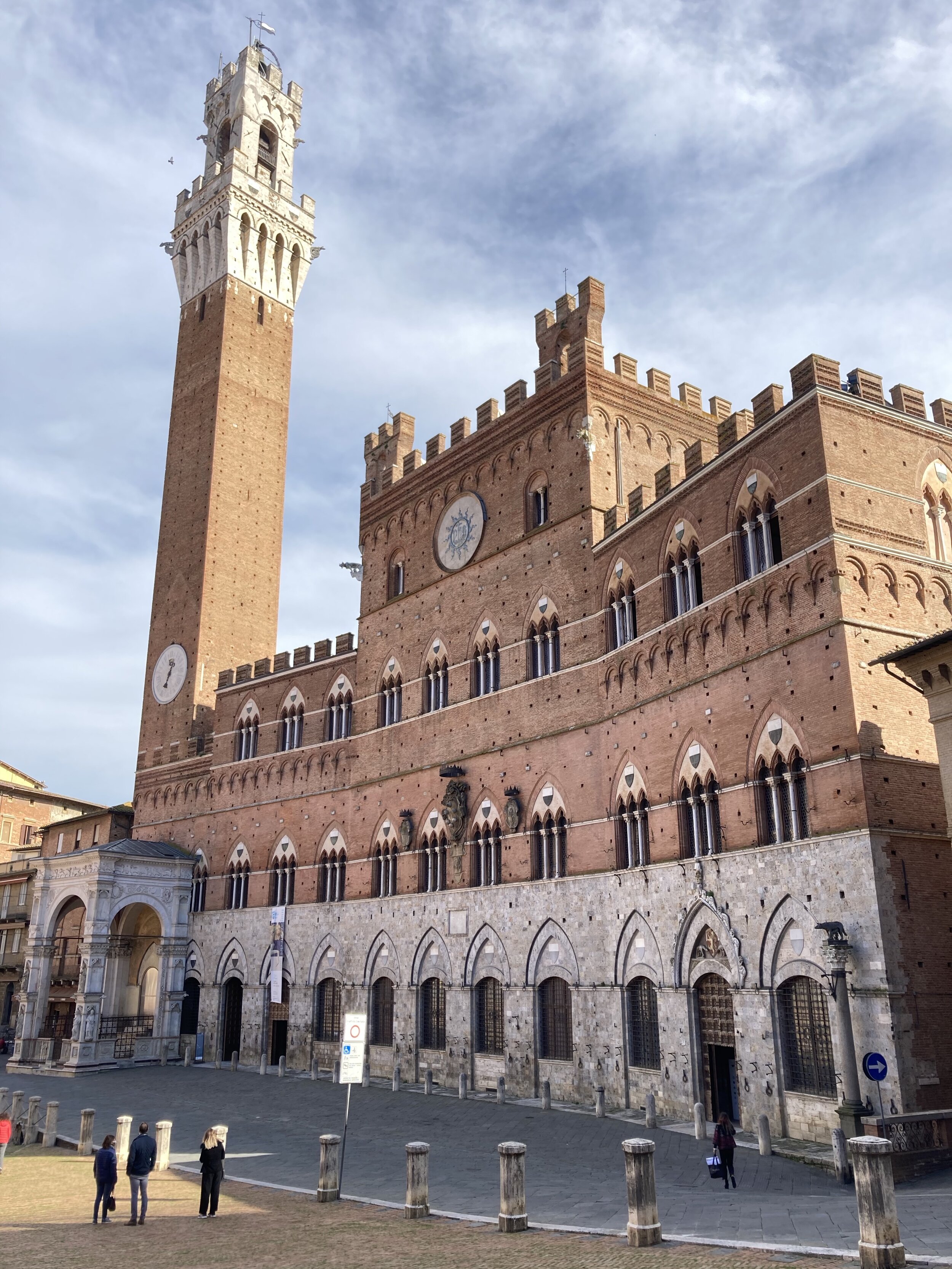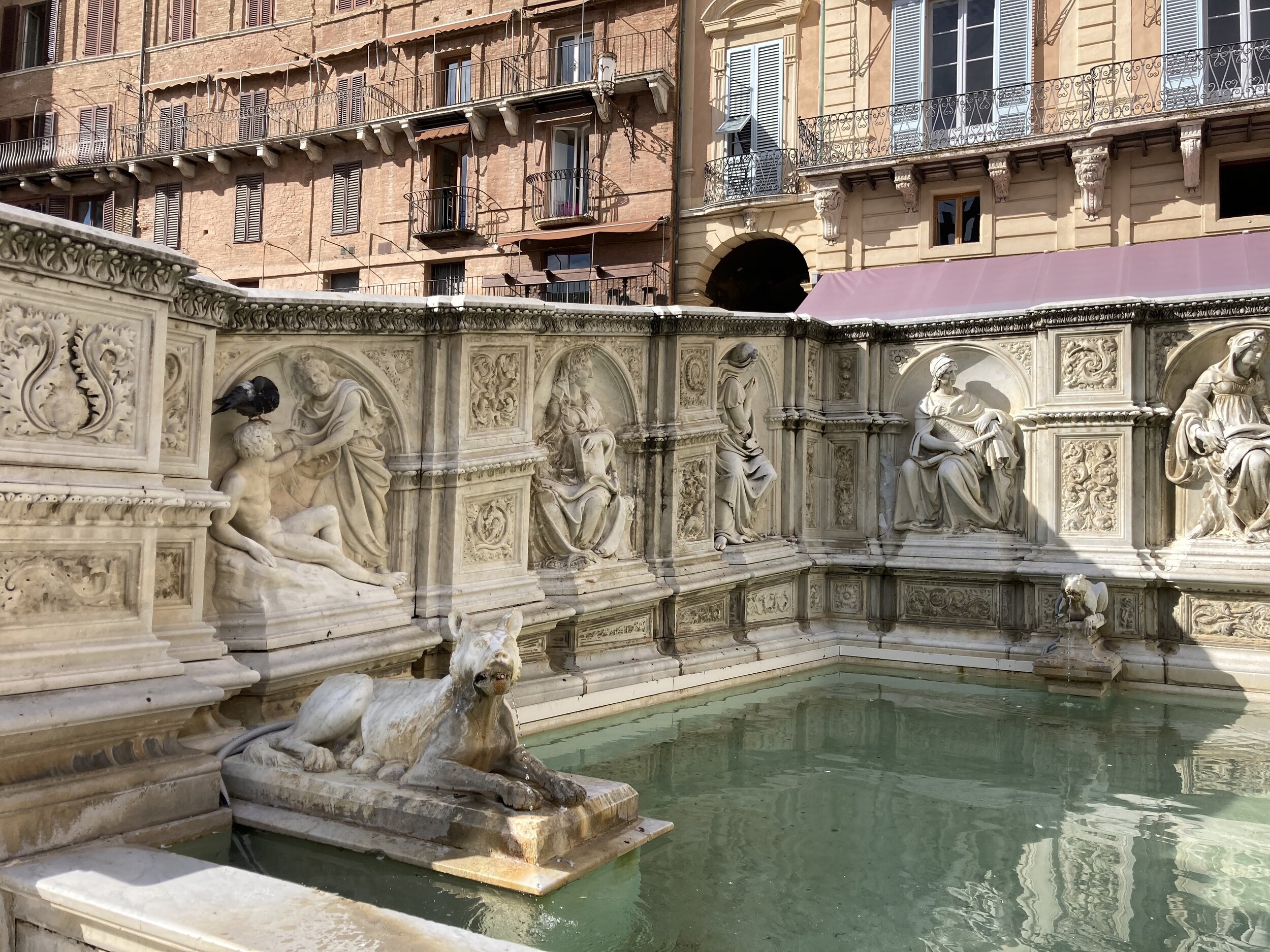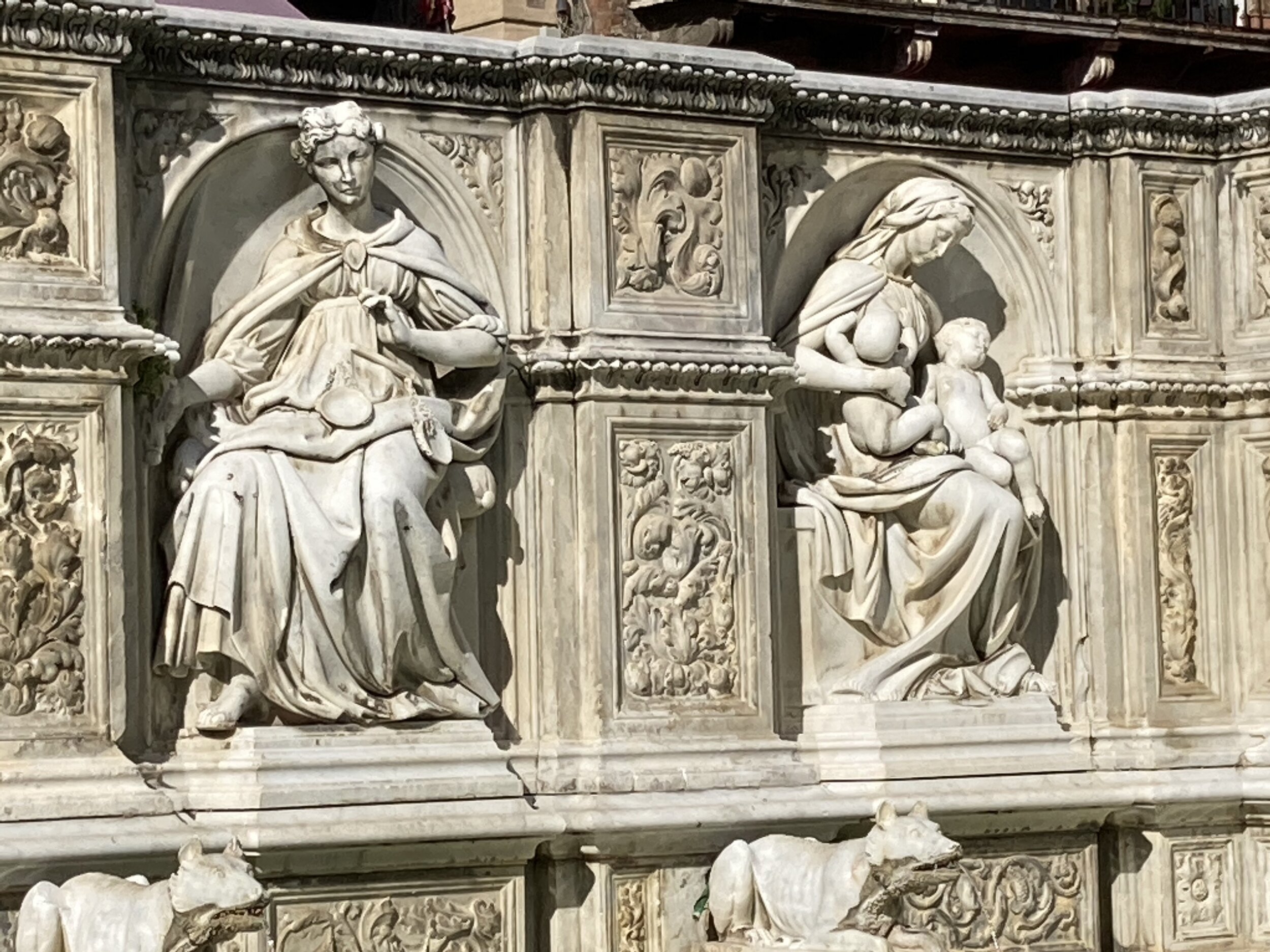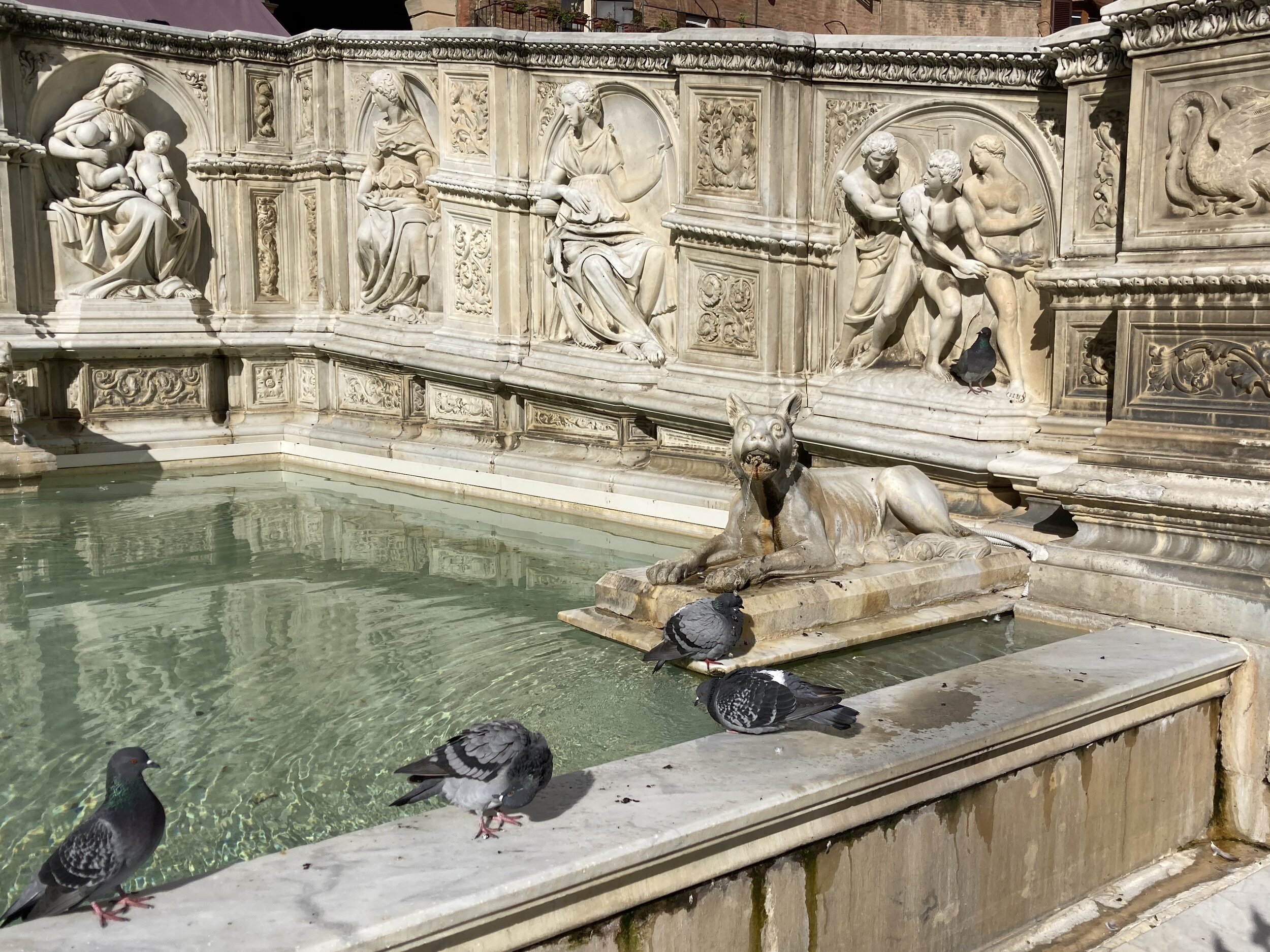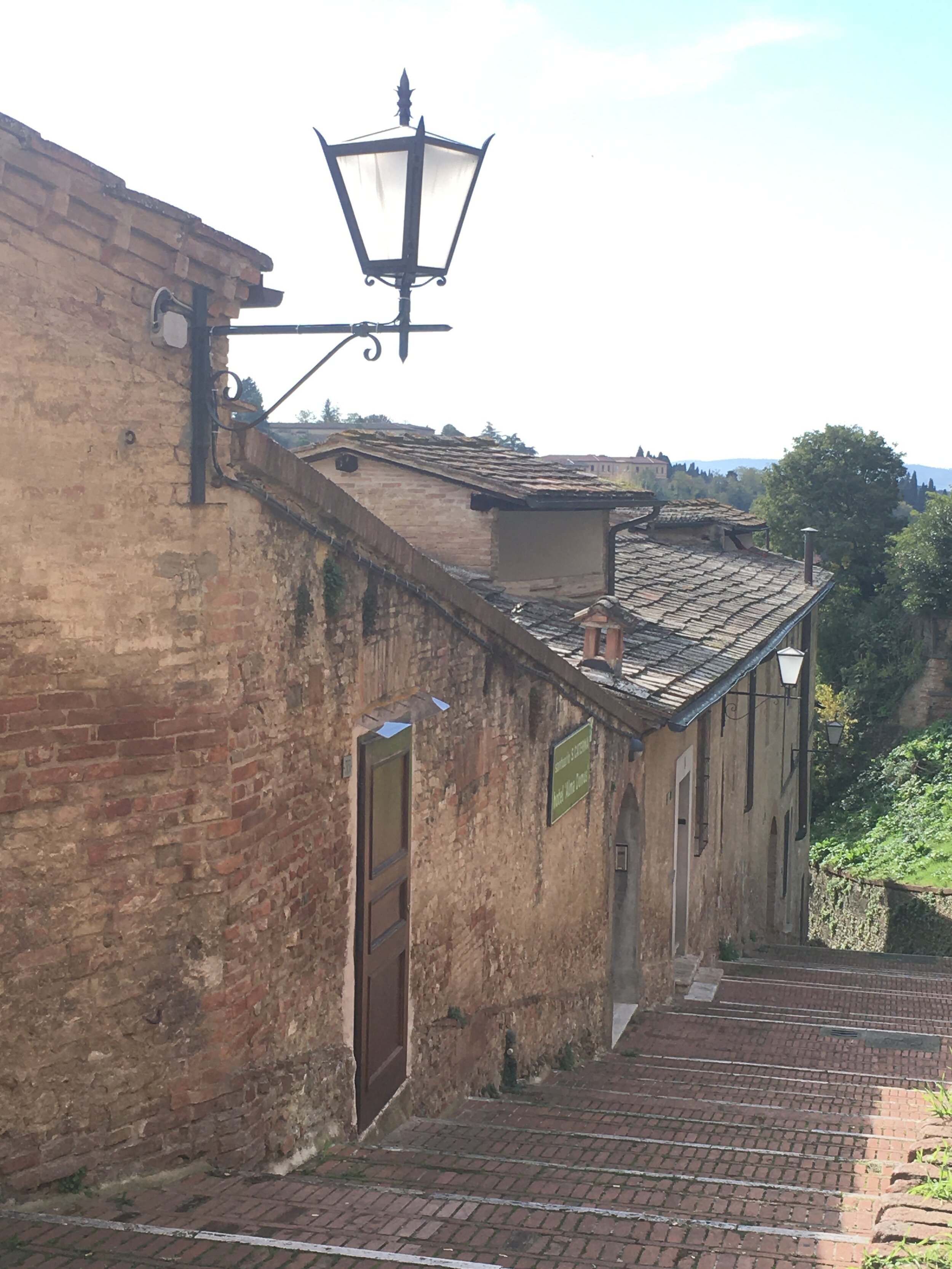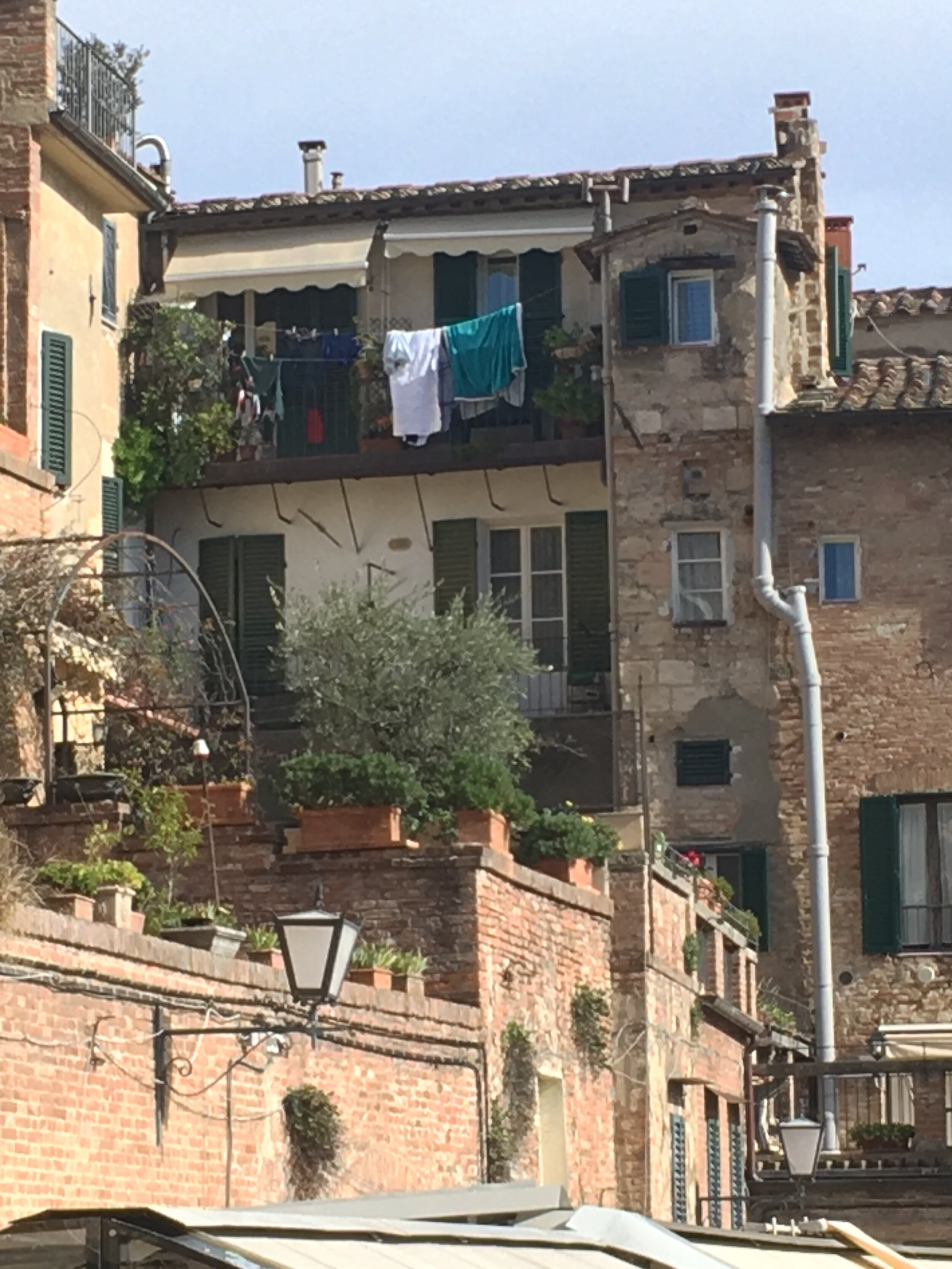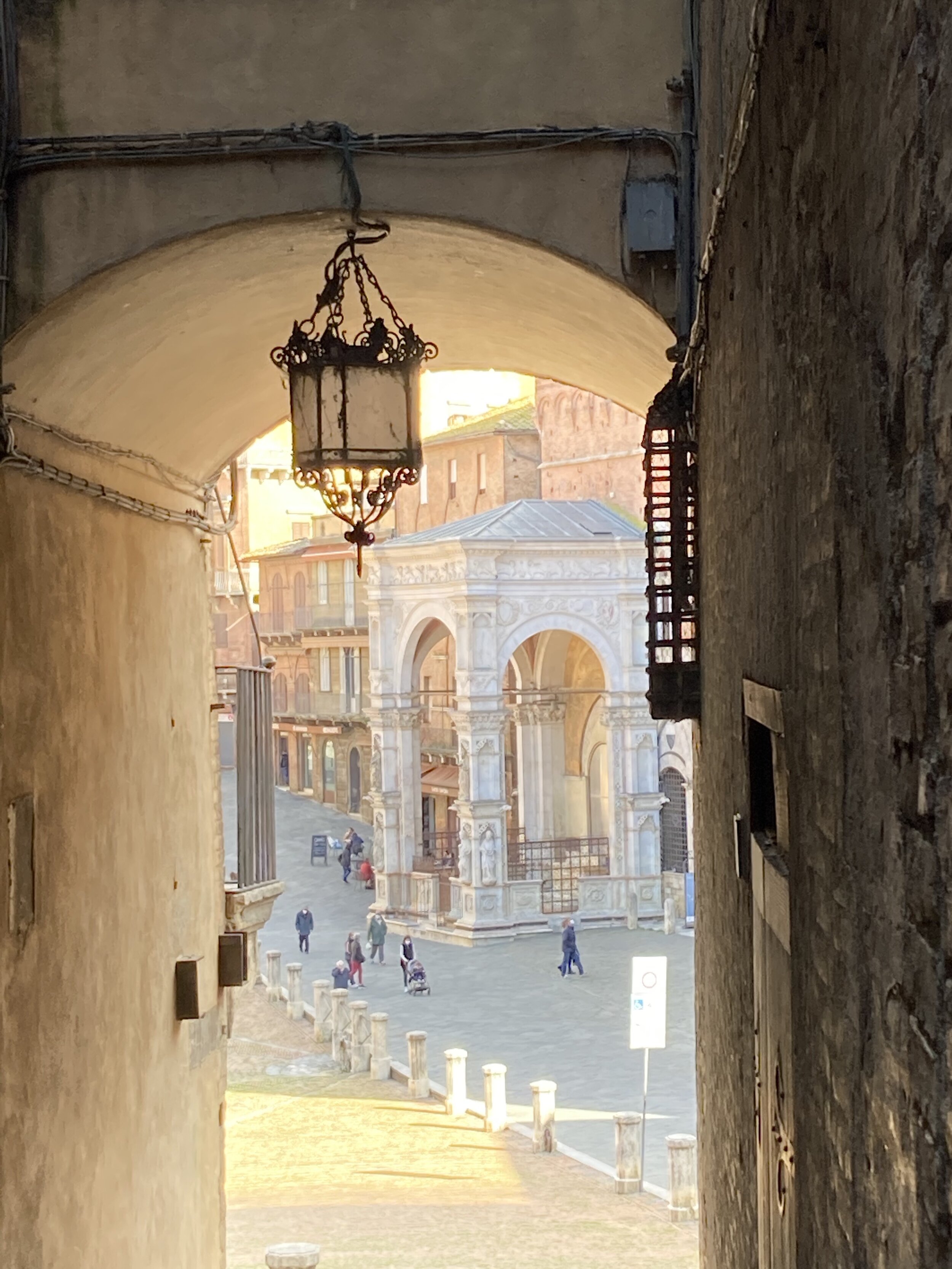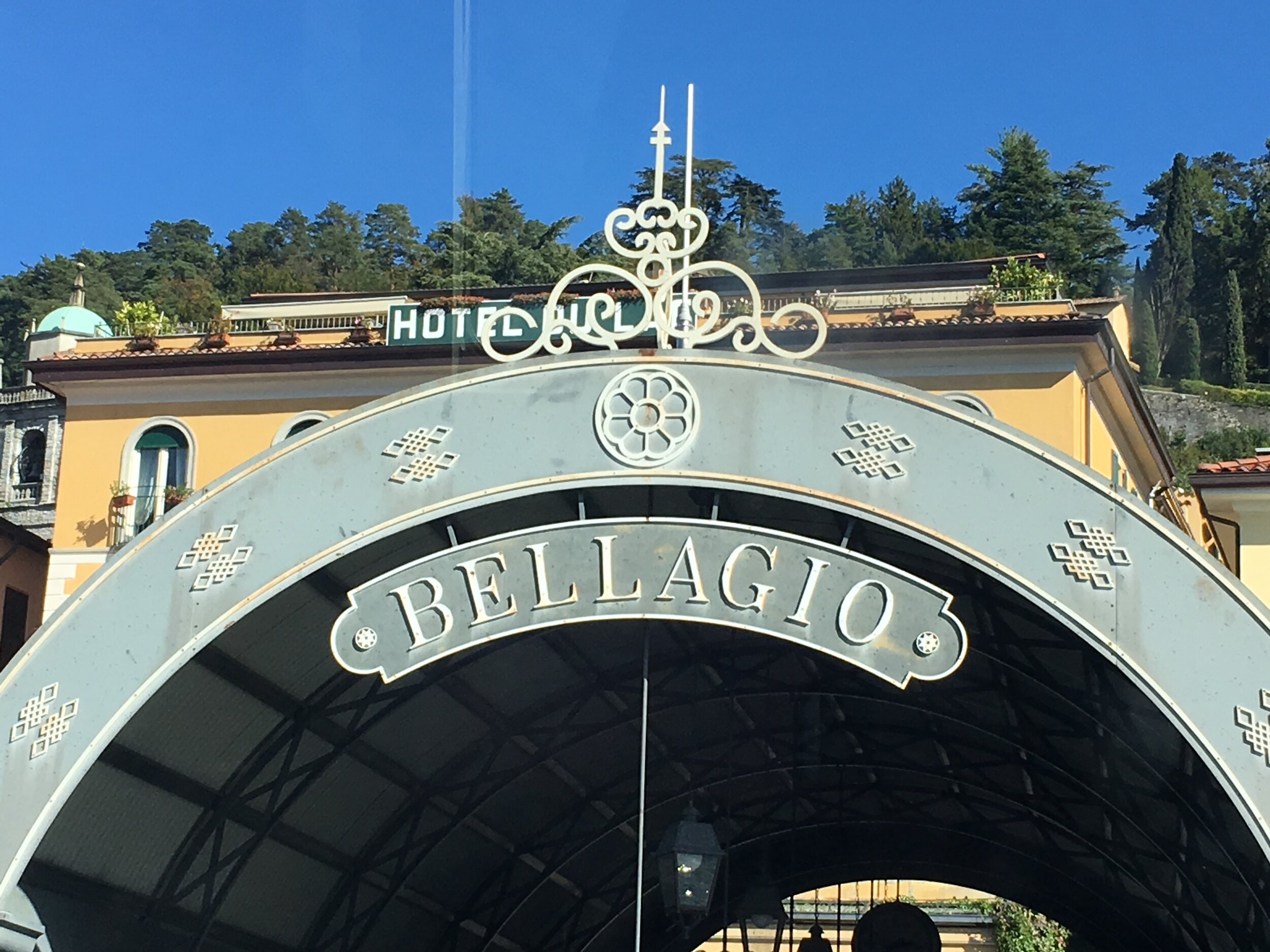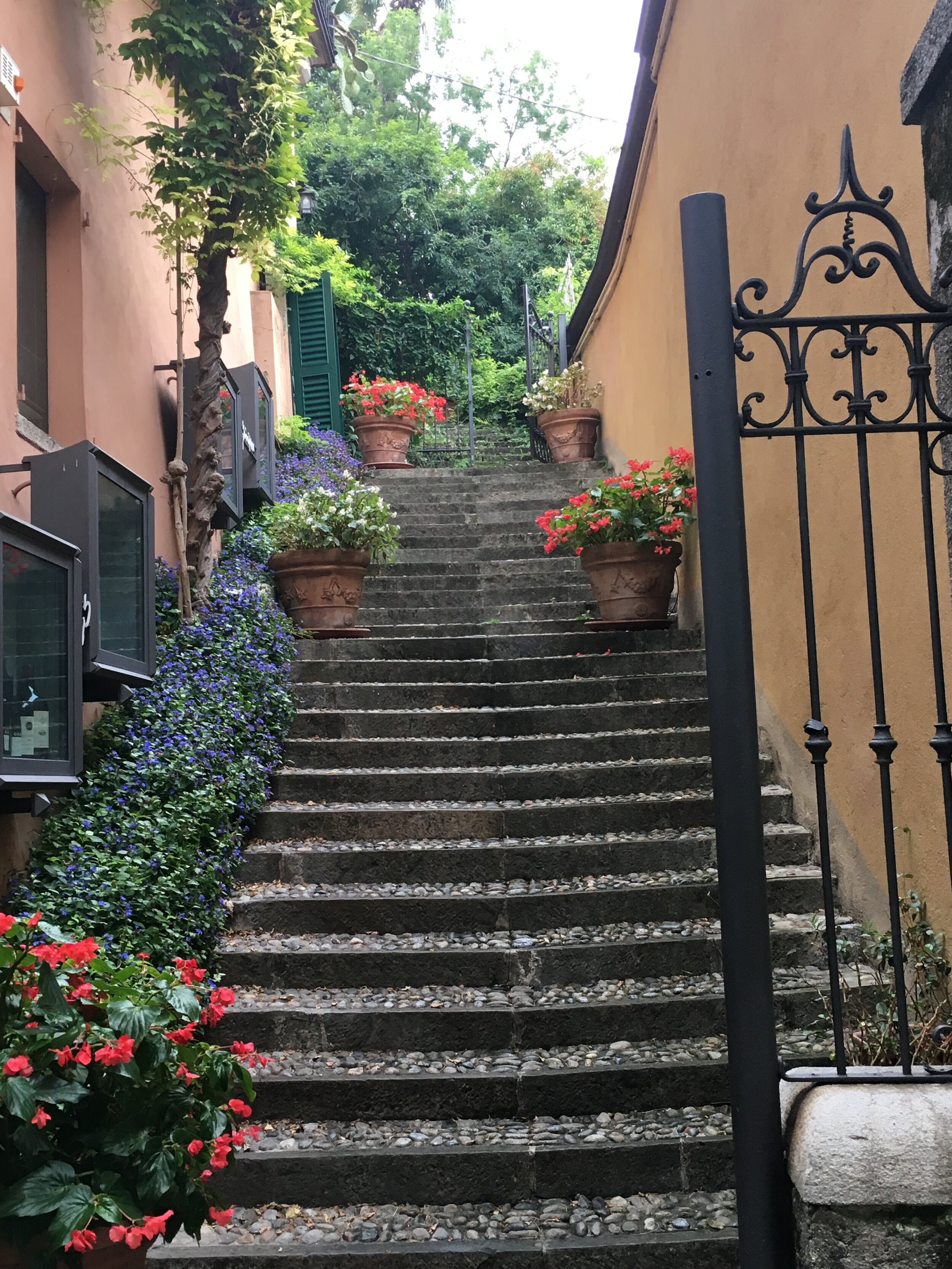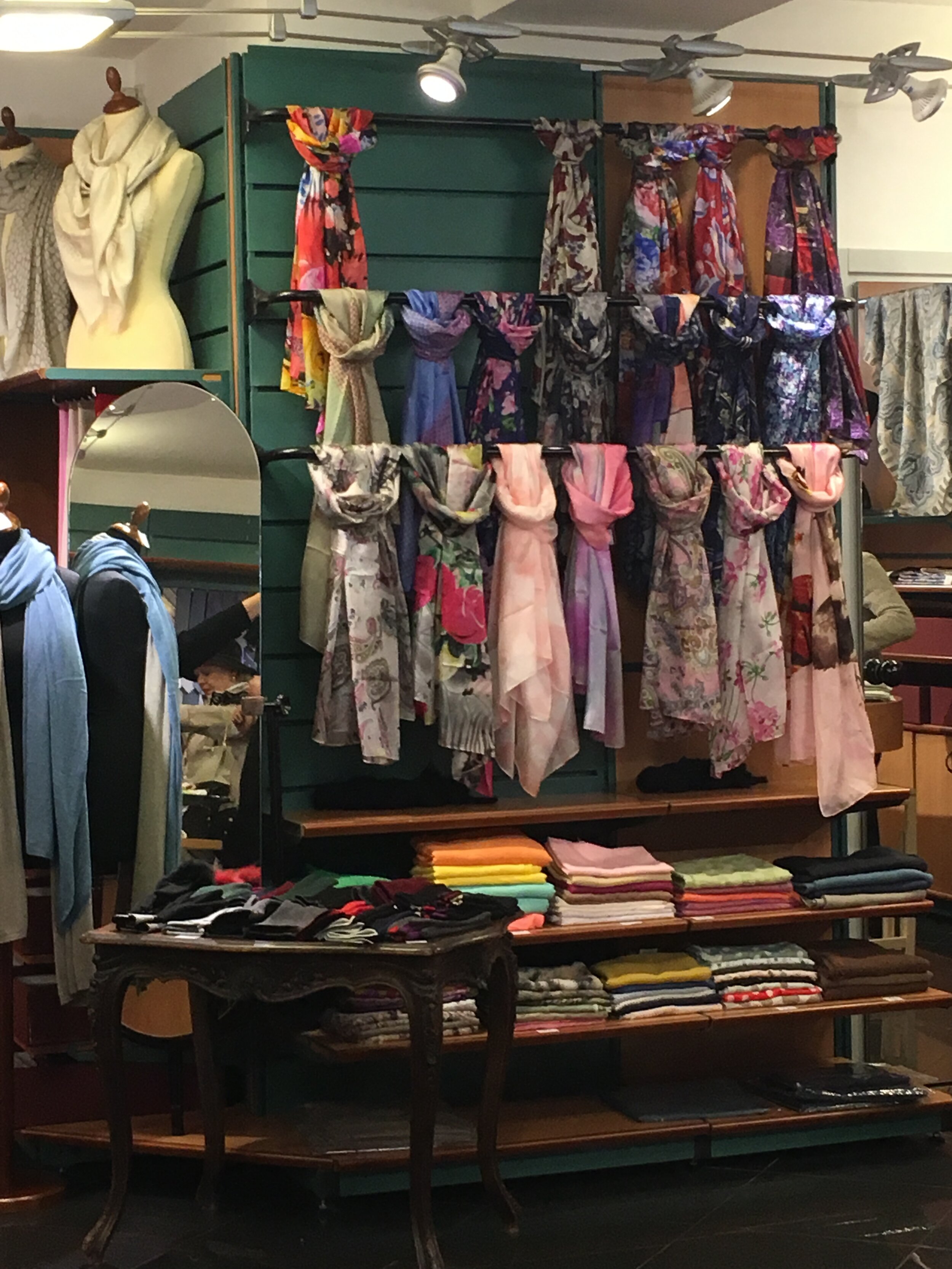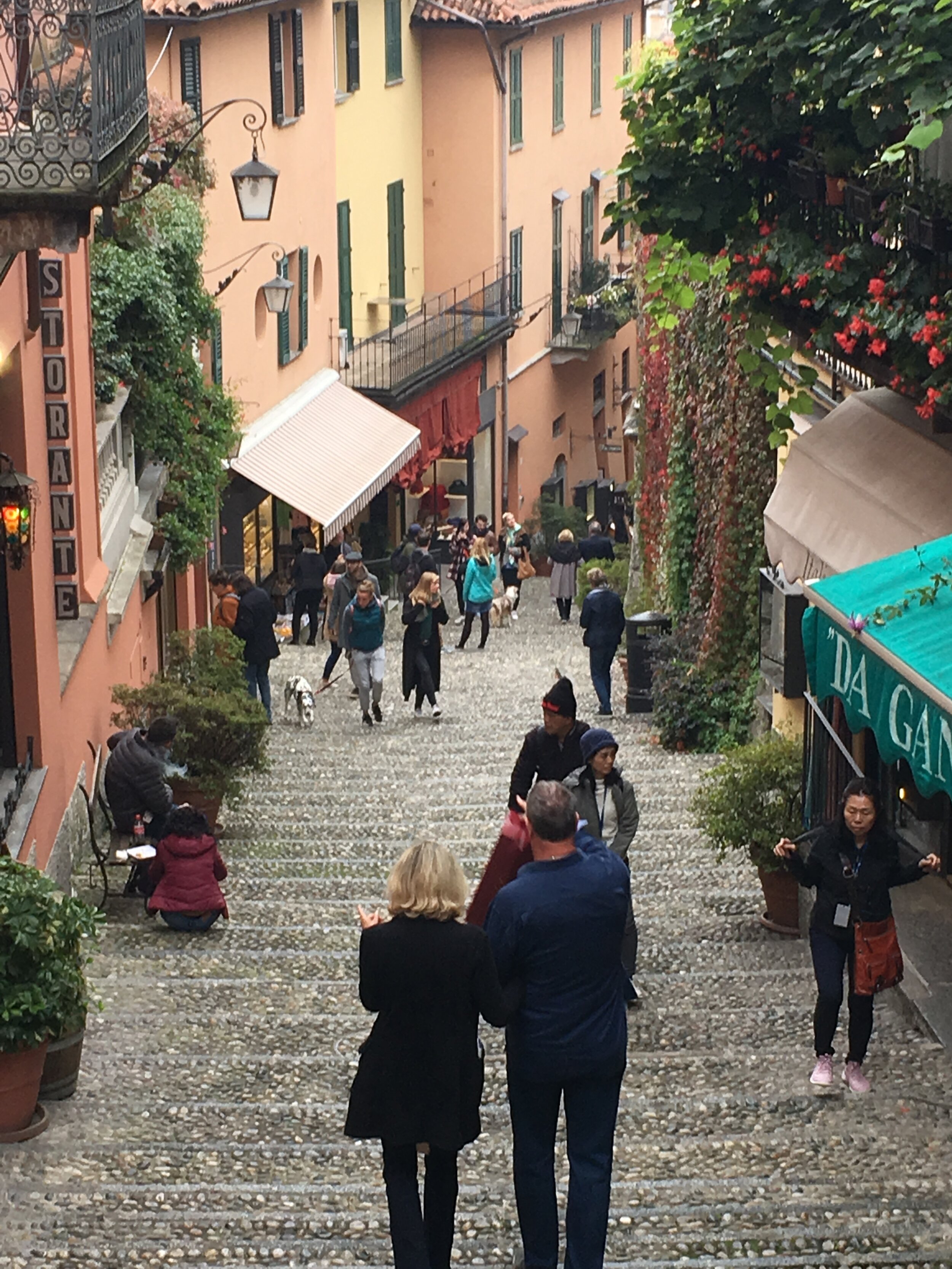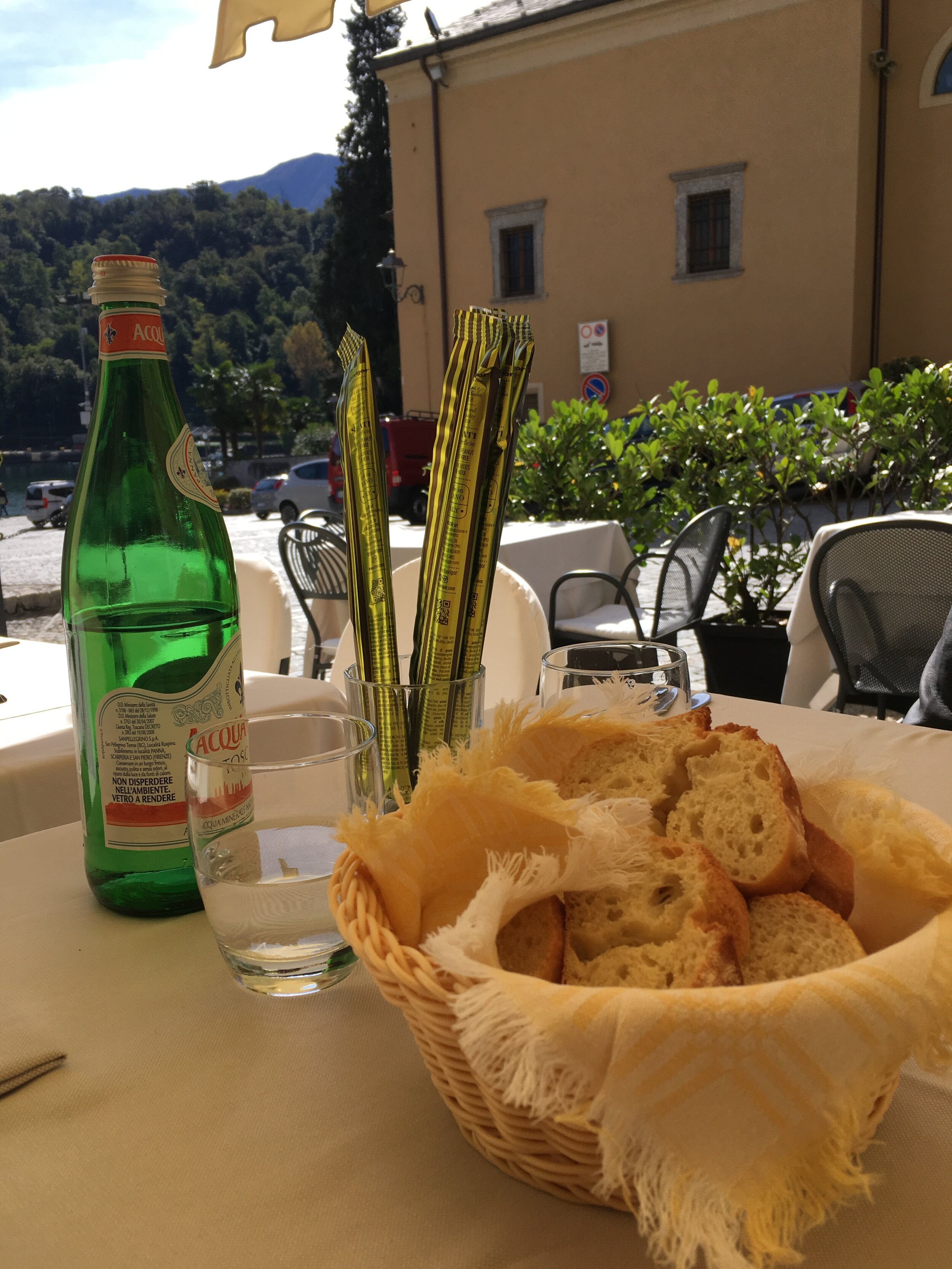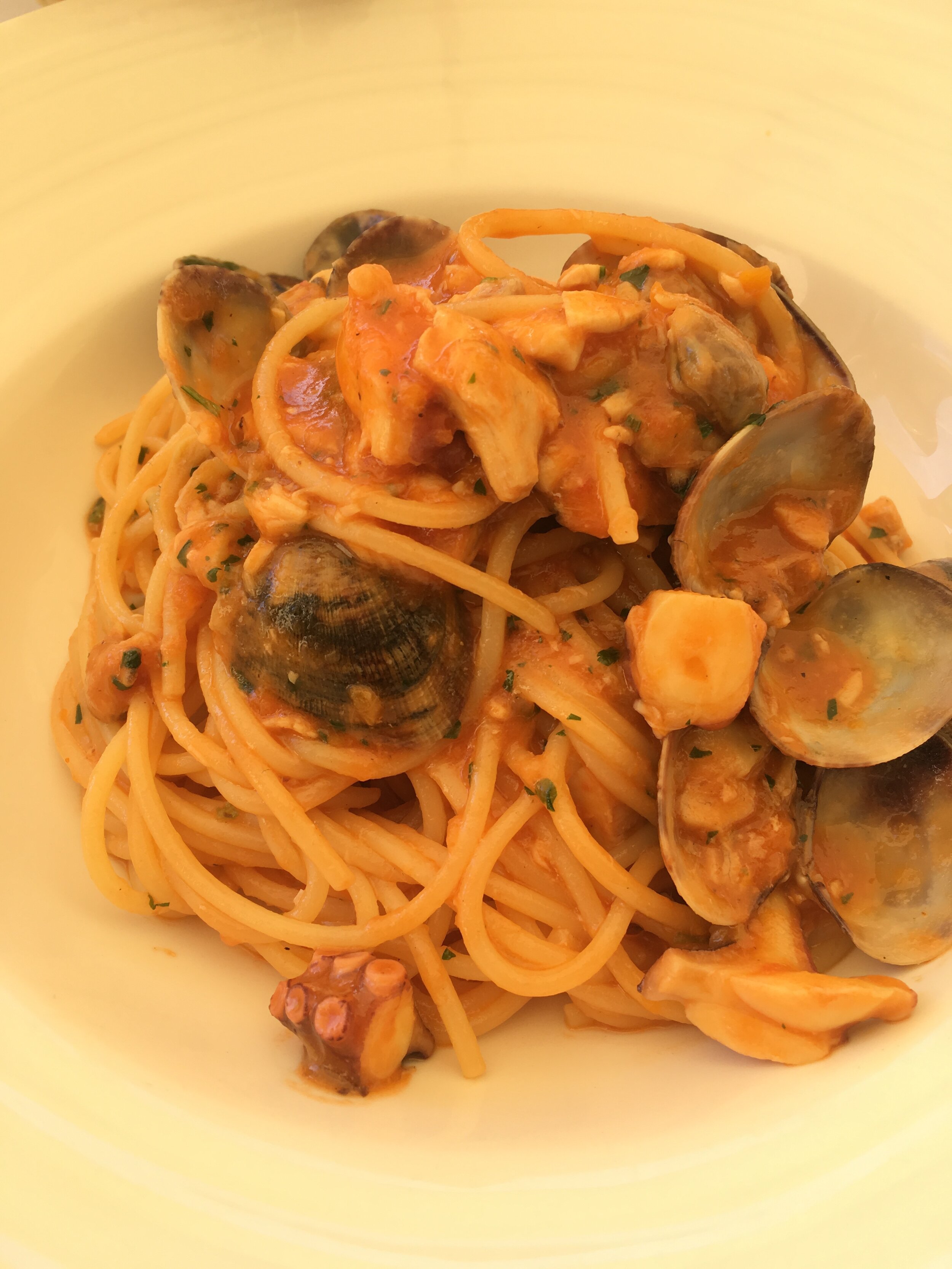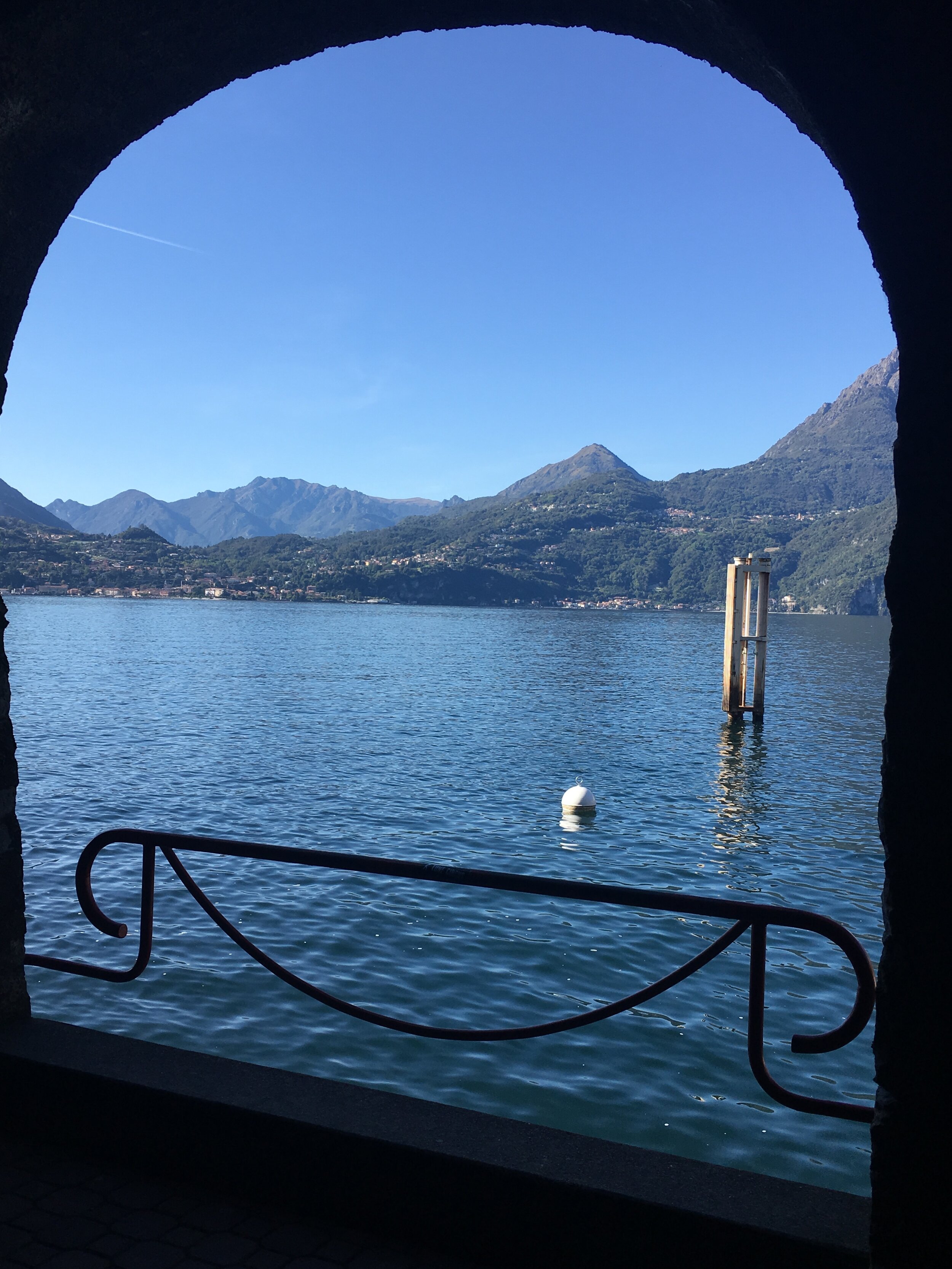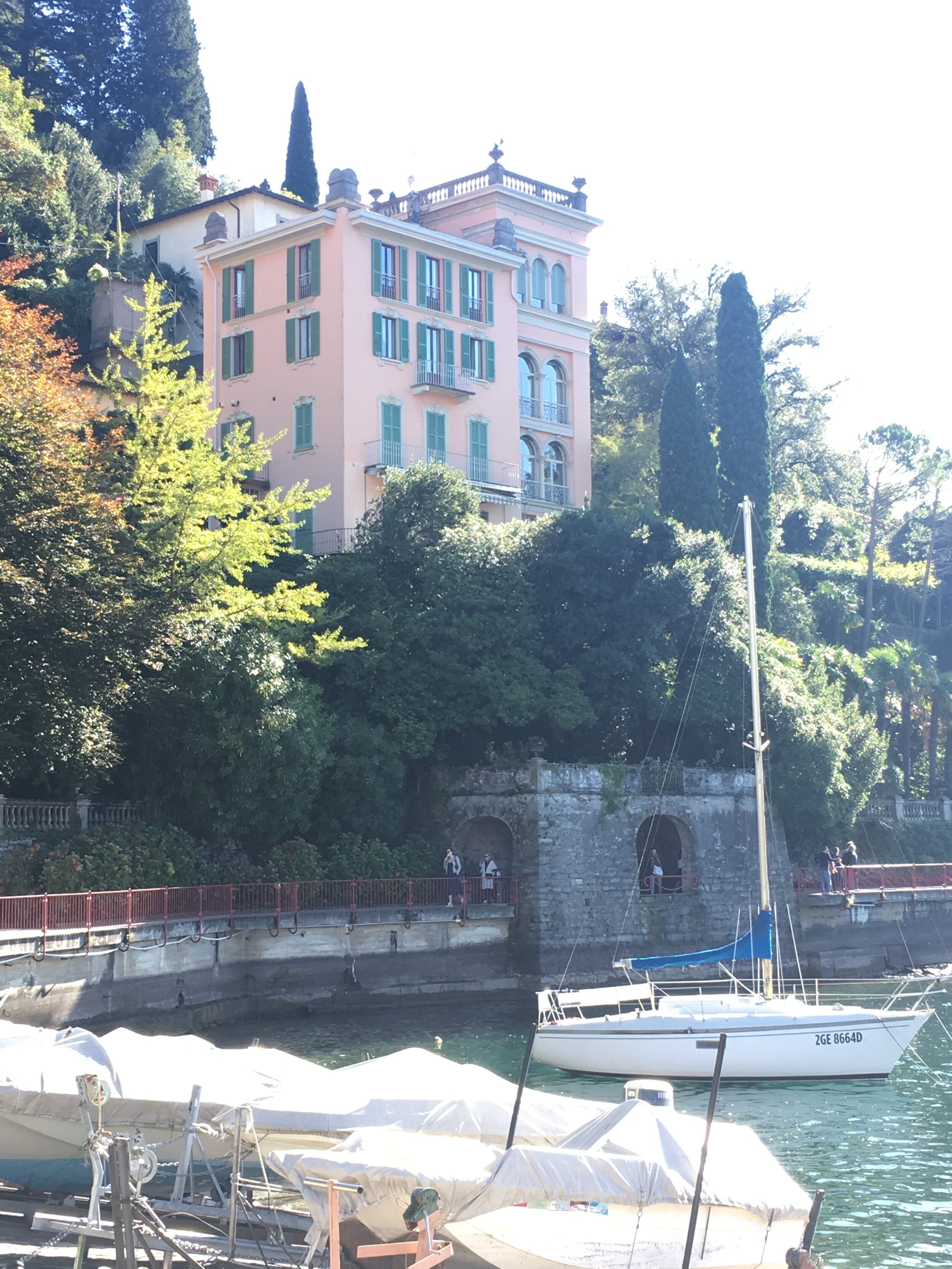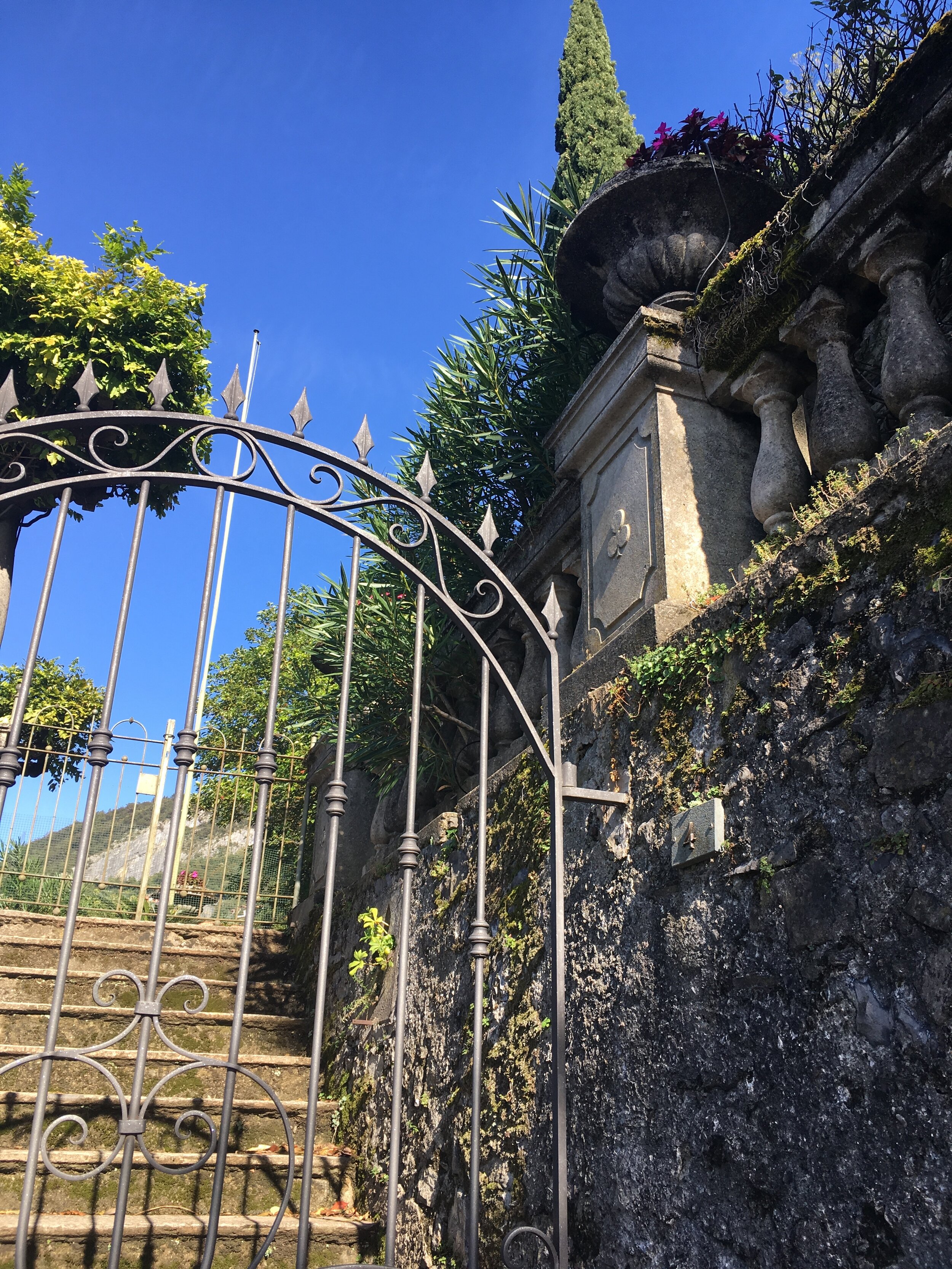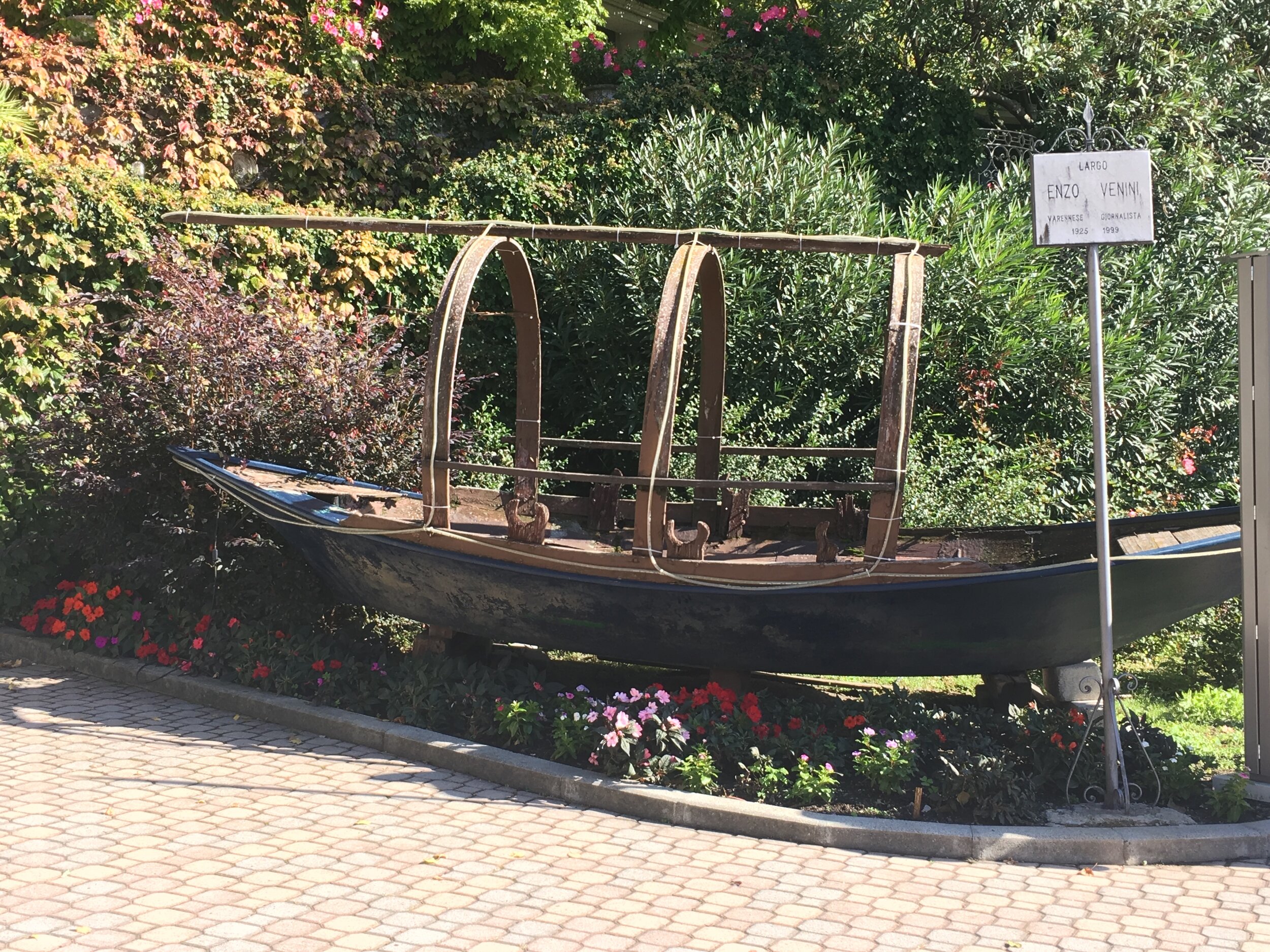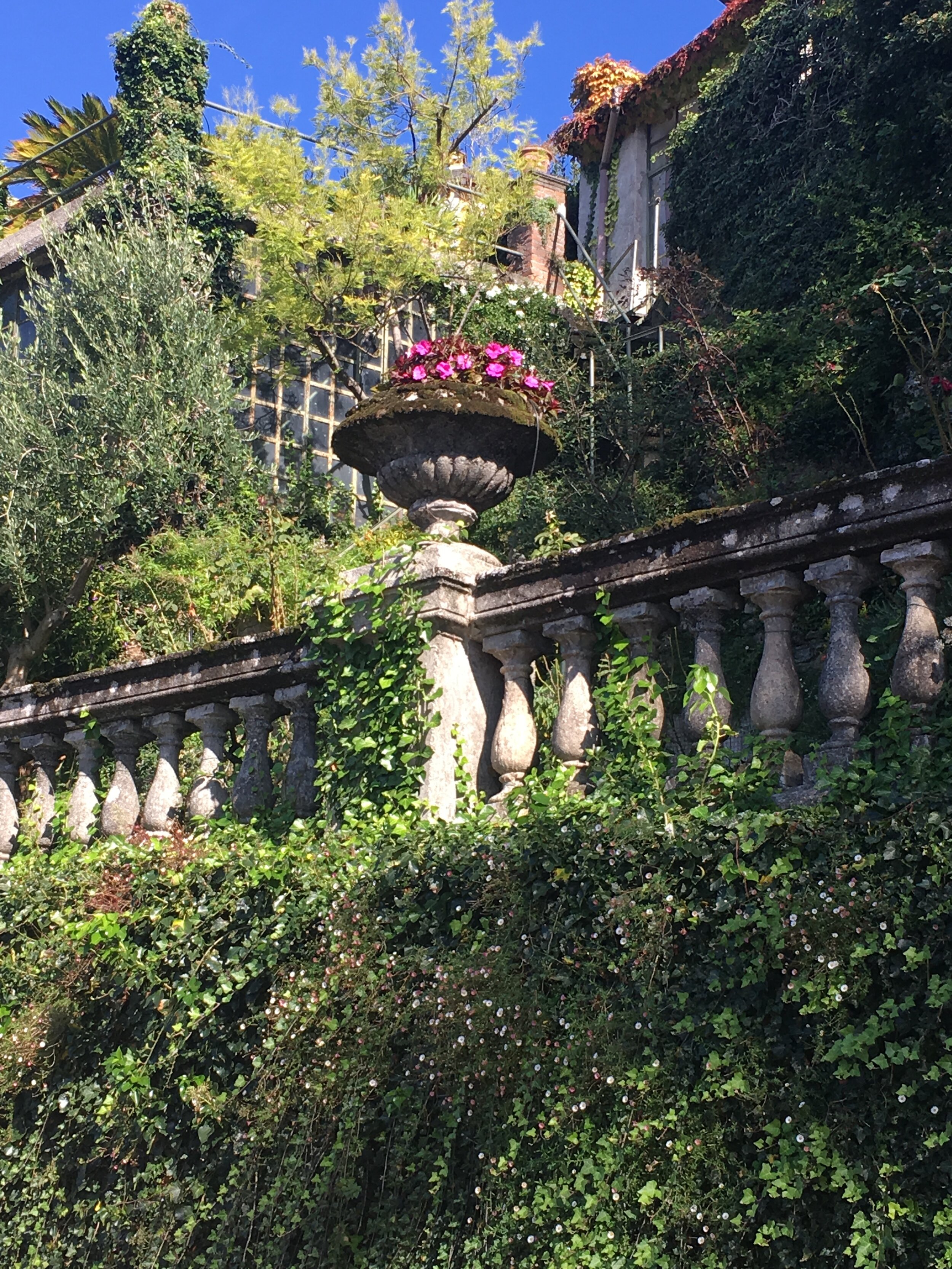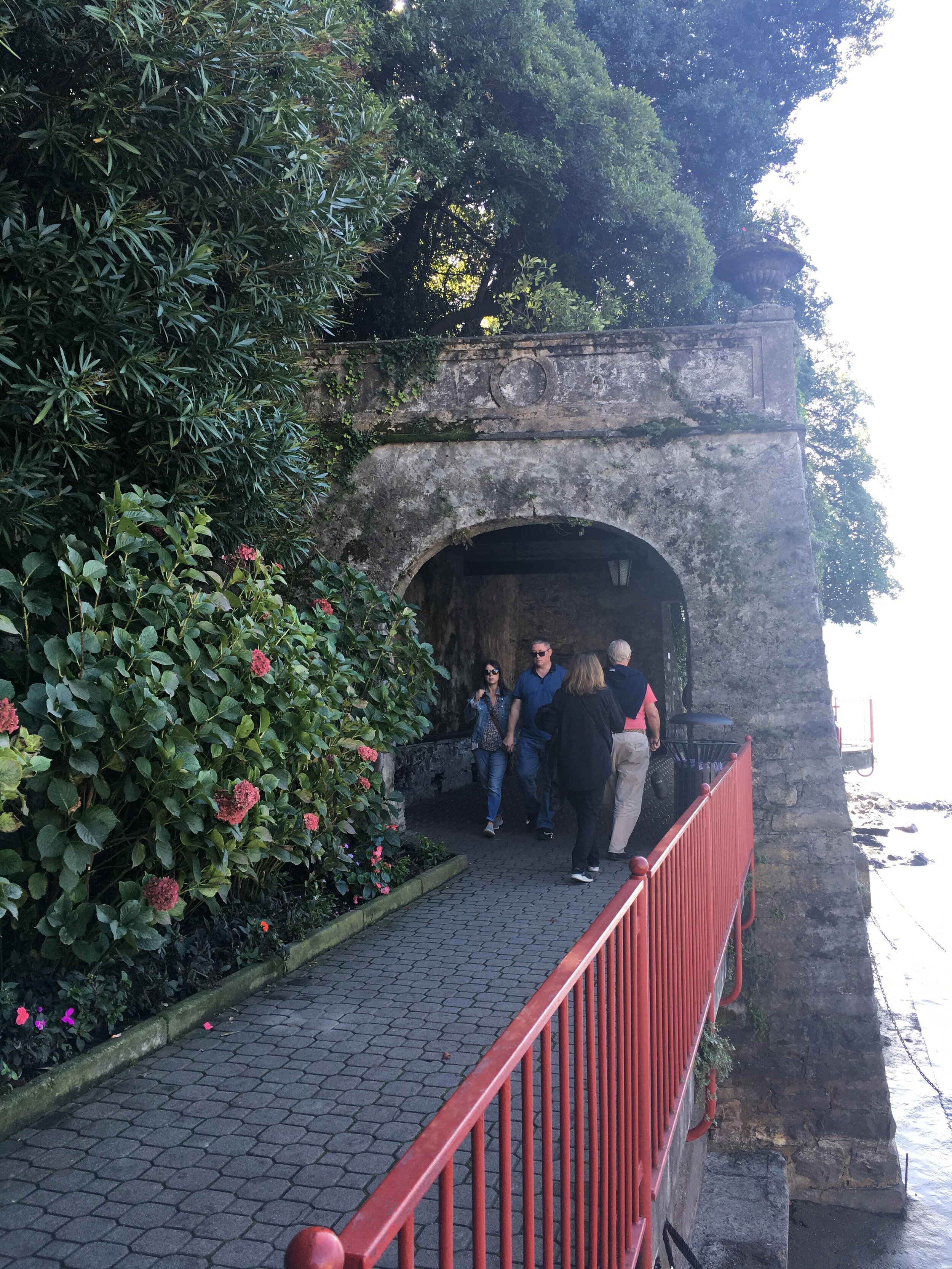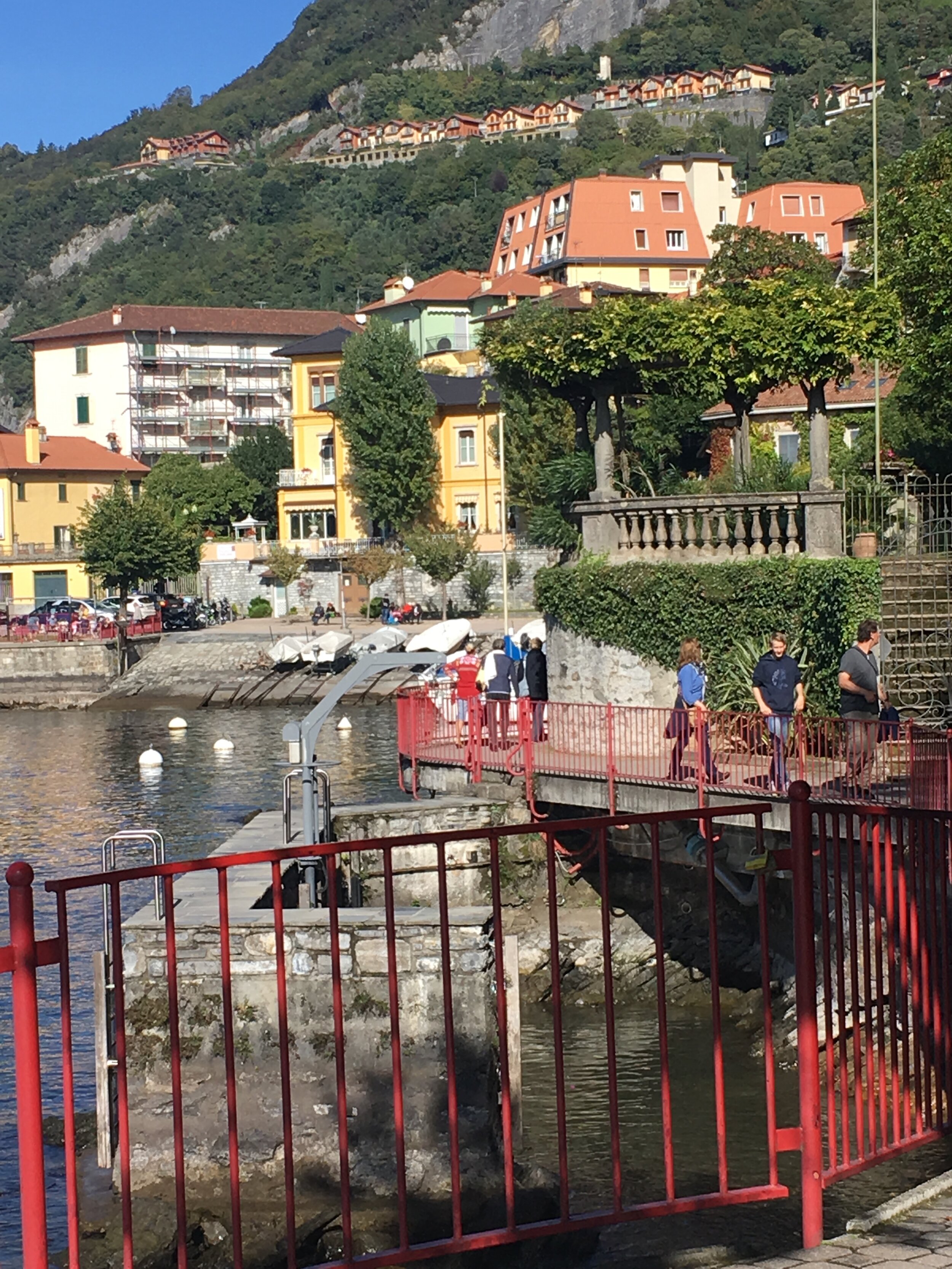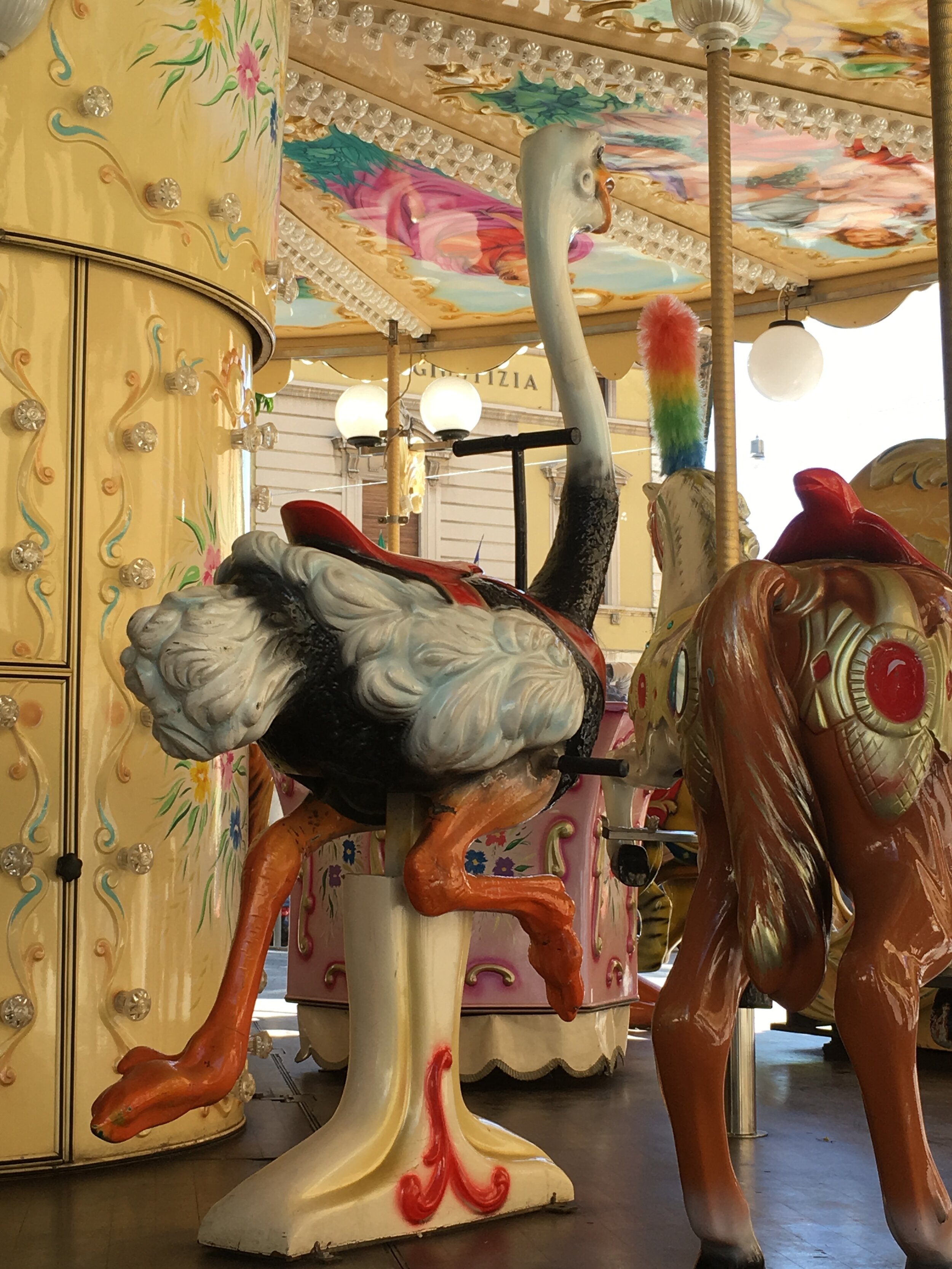San Quirico d'Orcia
The small villages in the Val d’Orcia have much in common. They sit on hilltops and look out over rolling hills, olive groves, vineyards, and cypress trees. They are often fortified by city walls, the legacy of ancient conflicts. The street plans are mostly Medieval, often with a single main street and a large main piazza ringed with stone and brick buildings. They are filled with churches large and small.
Classic Val d’Orcia scenes, in the village of San Quirico
And the history! From Etruscan tombs to Roman roads, from Medieval streetscapes to World War II bombs, the history of these villages is rich and fascinating. That they have so much in common, and yet each village has its own unique character, makes a trip through this area especially wonderful. Think of Monticchiello with its Teatro Povero and stone houses, Montalcino with its famed Brunello wine and steep streets, Bagno Vignoni with its thermal pools, and Pienza - the perfect Renaissance city - with its pretty houses and flowers filled window boxes.
San Quirico d’Orcia is yet another of the villages found in the Val d’Orcia. Named after a martyred child saint, it lies between Montalcino and Pienza, situated along the ancient Via Francigena, the pilgrim’s route between Canterbury and Rome. Today, modern pilgrims and adventurous walkers still pass through San Quirico as they follow the ancient path. Other tourists arrive more conventionally by car and stay to enjoy the many things that make this a most pleasant spot.
The ancient wall around San Quirico
Most of the wall surrounding the city remains, with 2 gates providing entrance to the historic center of town and several of the former watchtowers still standing (though now repurposed, some into tall and narrow homes). The Porta Cappuccini is the old and most historic gate – a lovely way to enter the town.
The best way to explore San Quirico is to simply wander. A stroll along the main street, Via Dante Alighieri, takes you both along the route of the Via Francigena and past most of the main sights in town. At one end, just inside the city walls, is the Collegiata Church (12th century) with its interesting shape, three very different entrances, and beautiful bell tower.
The Collegiata Church (also known as the church of Santi Quirico e Giulitta)
Further down the street is the church of San Francesco, with its famous terracotta della Robbia madonna (moved here from the Chapel of the Vitaleta) and its combination bell and clock tower. In front of the church is the Piazza della Liberta`. This lively square is the center of town and a hub of activity. It’s a great place to stop for a coffee or a glass of wine and to soak in the atmosphere.
Piazza della Liberta` and the Church of San Francesco
In this square is also the entry to one of San Quirico’s special spaces – the Horti Leonini, a 16th century garden. The centerpiece is a statue of Cosimo III di Medici. All around him is classic Italian garden design.
Stepping back into the Piazza della Liberta`, and continuing down Via Dante Aligheri, are two of my favorite spots. One, is a hidden courtyard which contains an old well and the pilgrim’s refuge the Ospedale della Scala. The other, right on the street, is the small church of Santa Maria Assunta, which is over 1000 years old (but no interior photos allowed!)
The old well in front of the Ospedale della Scala
It’s also fun to wander the small side streets. On my most recent visit, during the height of the olive harvest, I found an active but very old frantoio (olive press) which was still using old stones to grind the olives. The friendly staff invited me inside to watch the process. The smell of the fresh olive oil was delicious!
And on a side street just along the church of San Francesco is the wonderful Trattoria al Vecchio Forno, built on the site of the old town bakery (forno). I’ve eaten here on previous visits and it’s a place that never fails to please. My lunch, a honey drizzled sformatino and a pappa al pomodoro, eaten outside in the garden on a warm fall day, was delicious.
Heading back to Pienza, the Chapel of the Madonna of Vitaleta is visible from the road. It is well worth the detour to stop and visit this tiny chapel, which is one of the most photographed spots in Tuscany. The chapel itself is not usually open, but the surrounding vistas are spectacular.
San Quirico was the last stop on my trip through the Val d’Orcia. There are so many other places left to explore, among them the famous wine towns of Montalcino and Montepulciano (which is just outside the Val d’Orcia) and also the gardens at La Foce.
I guess I’d better start planning a return trip!



